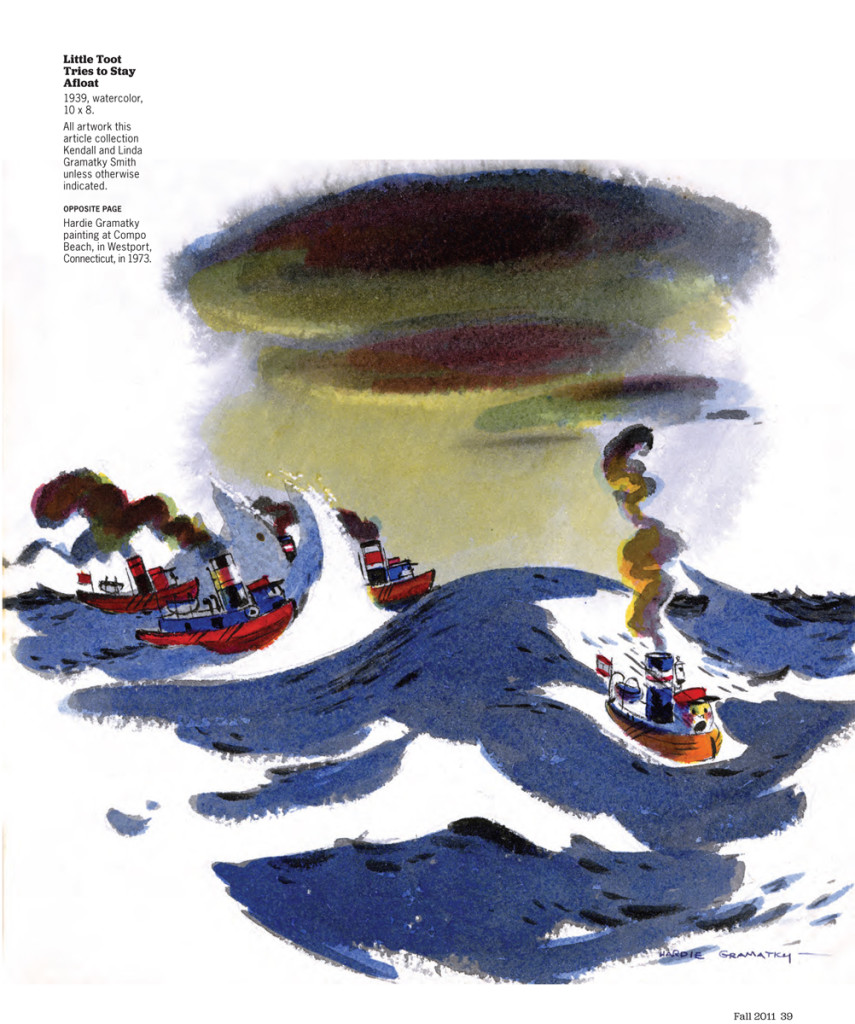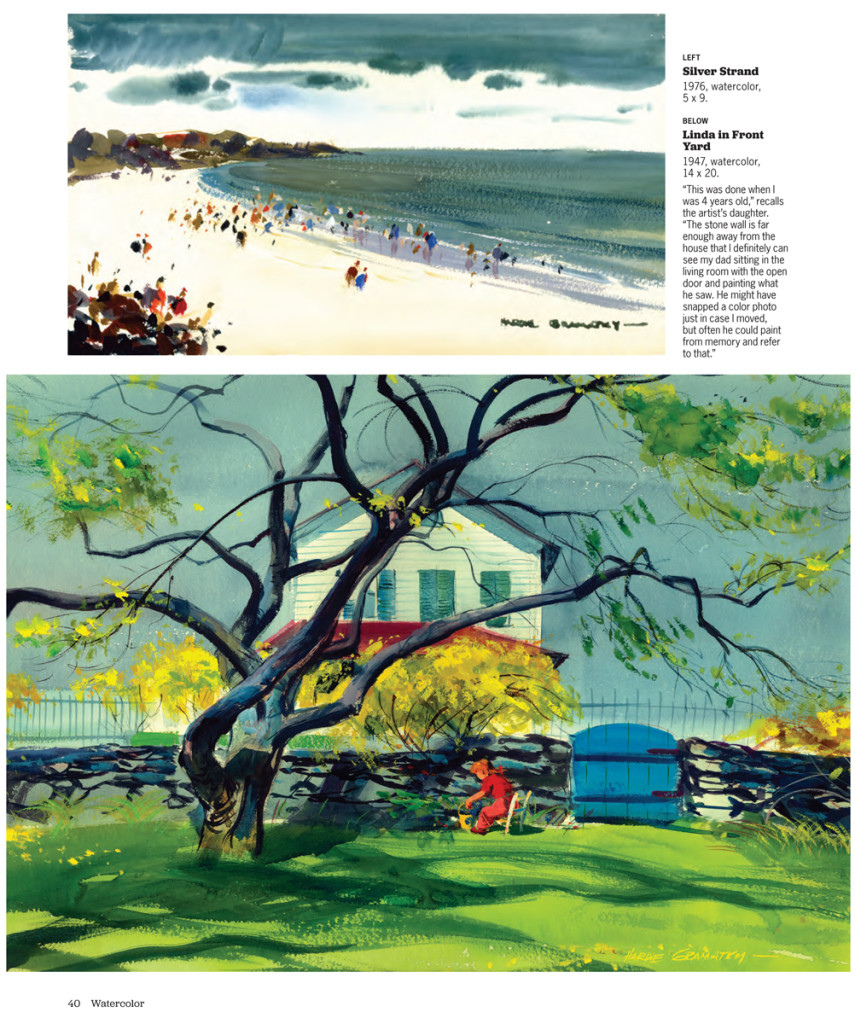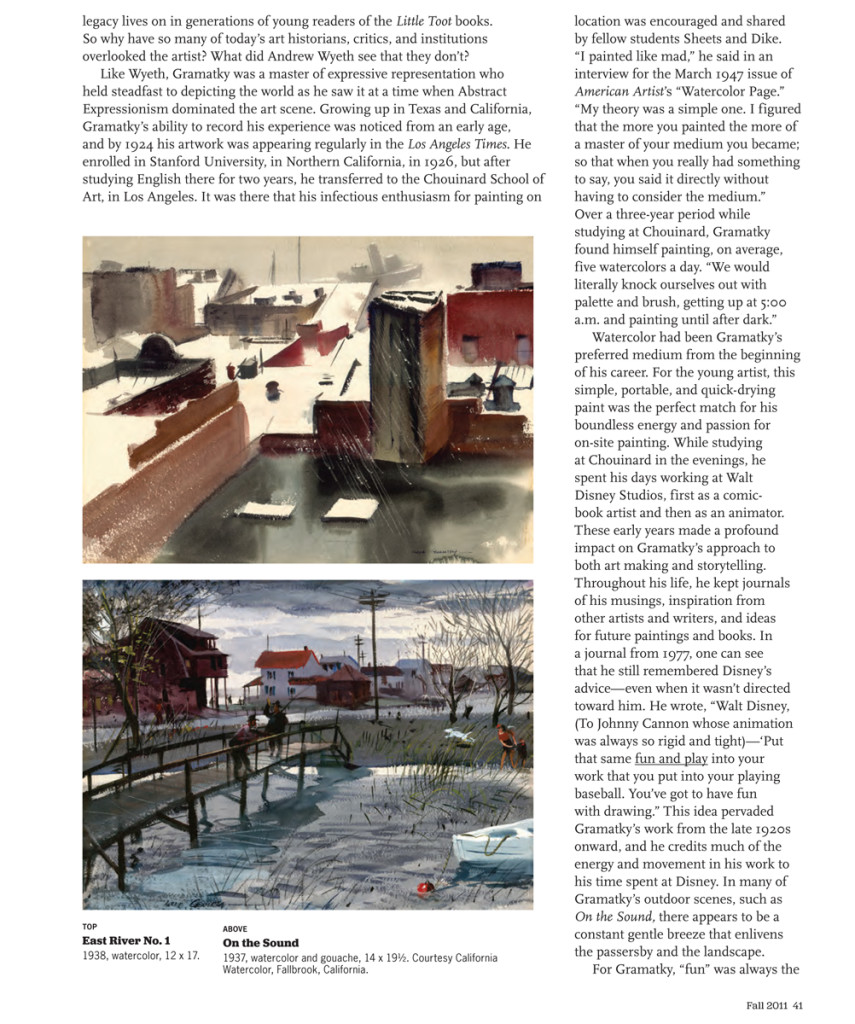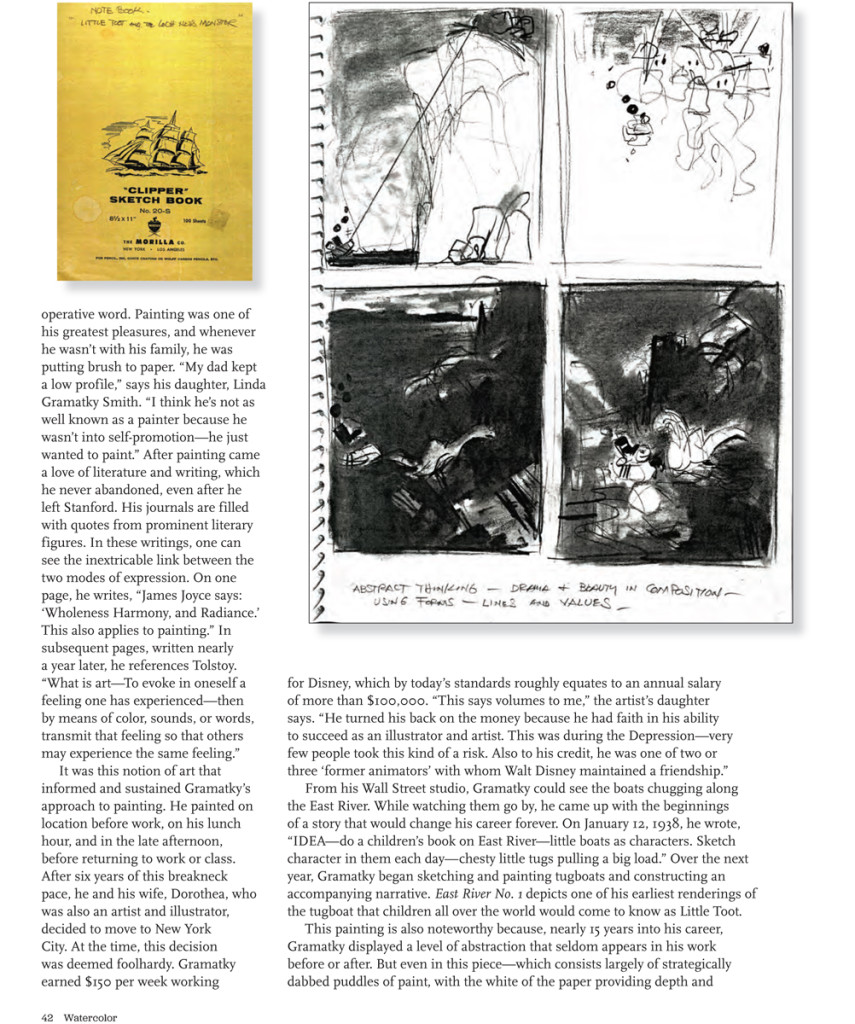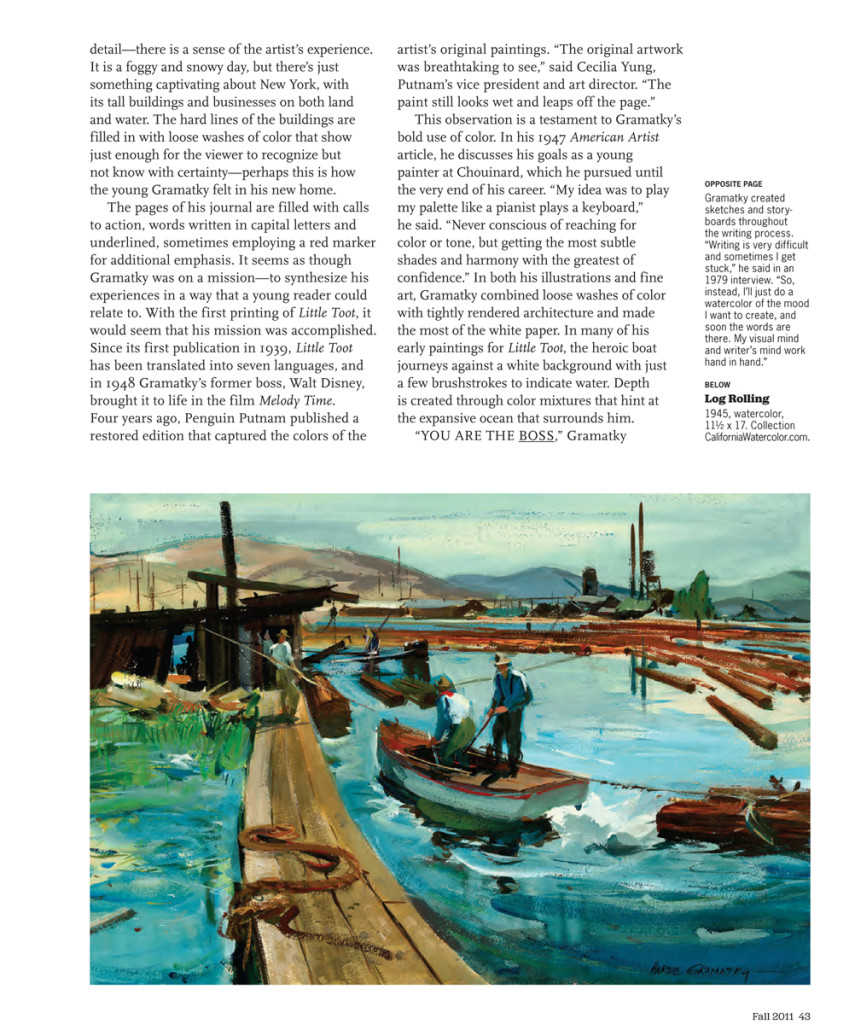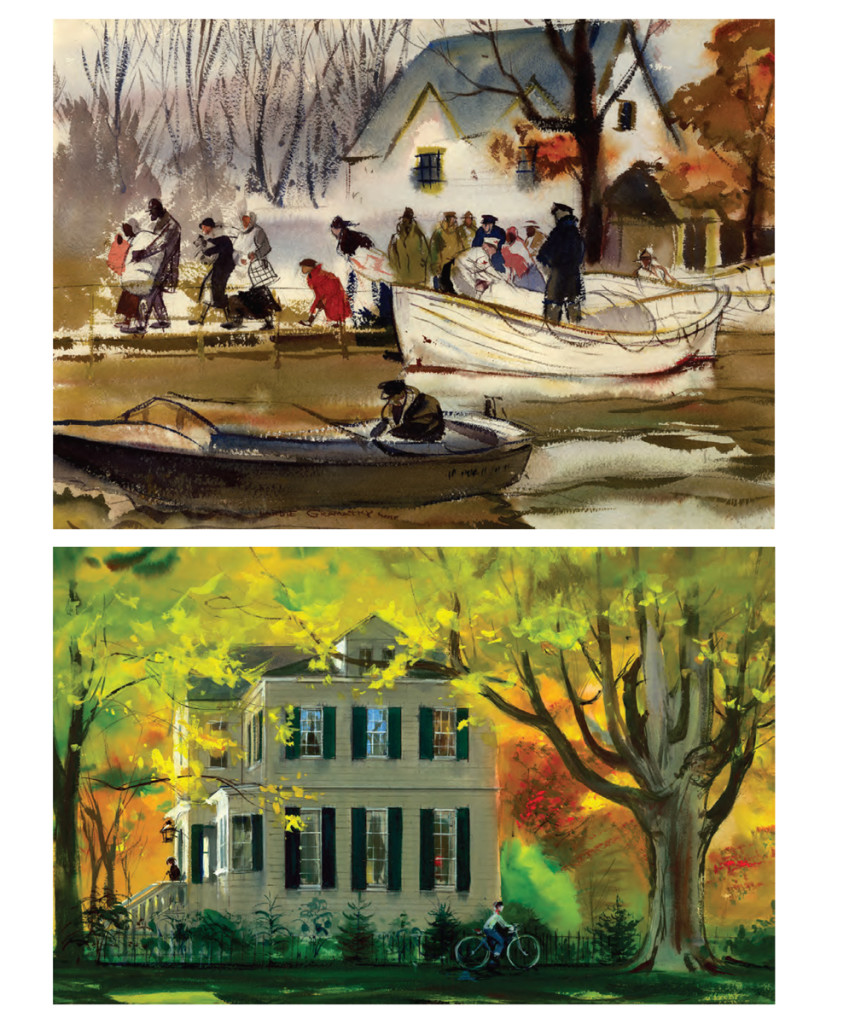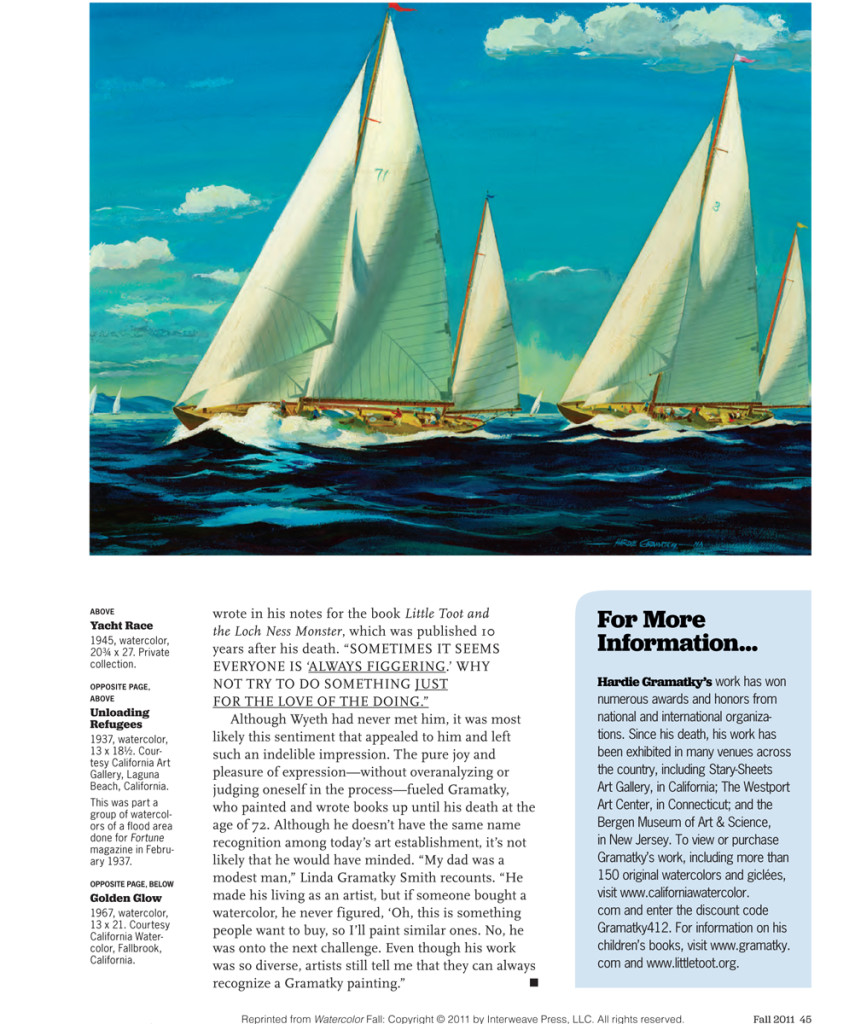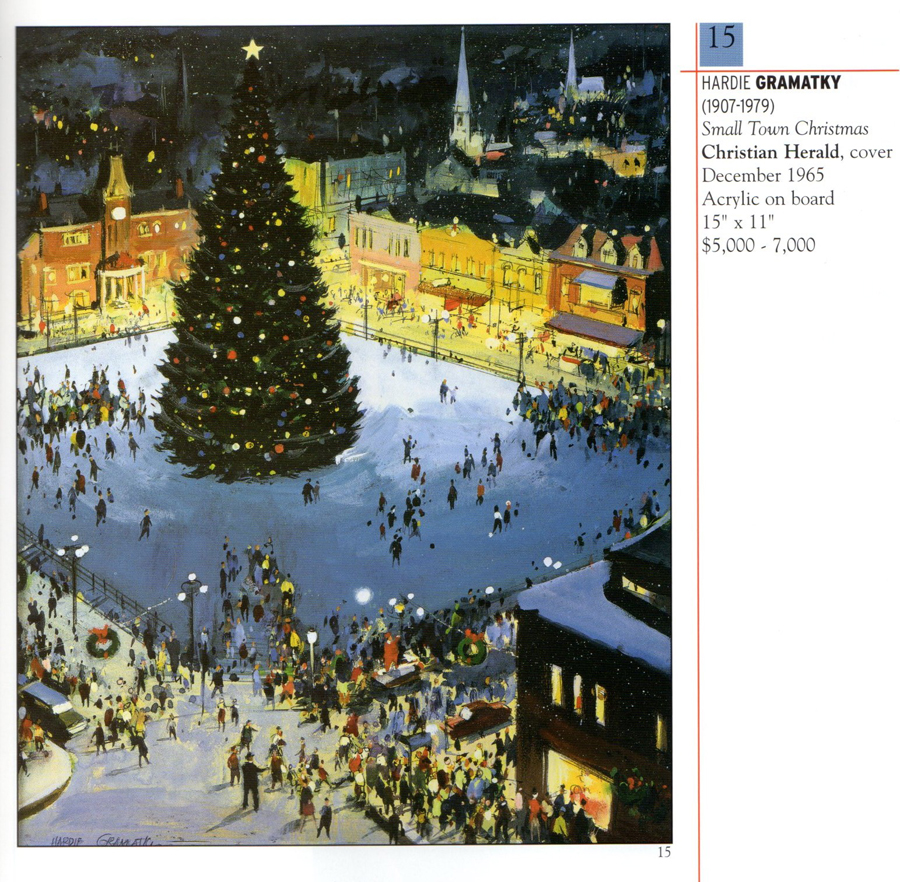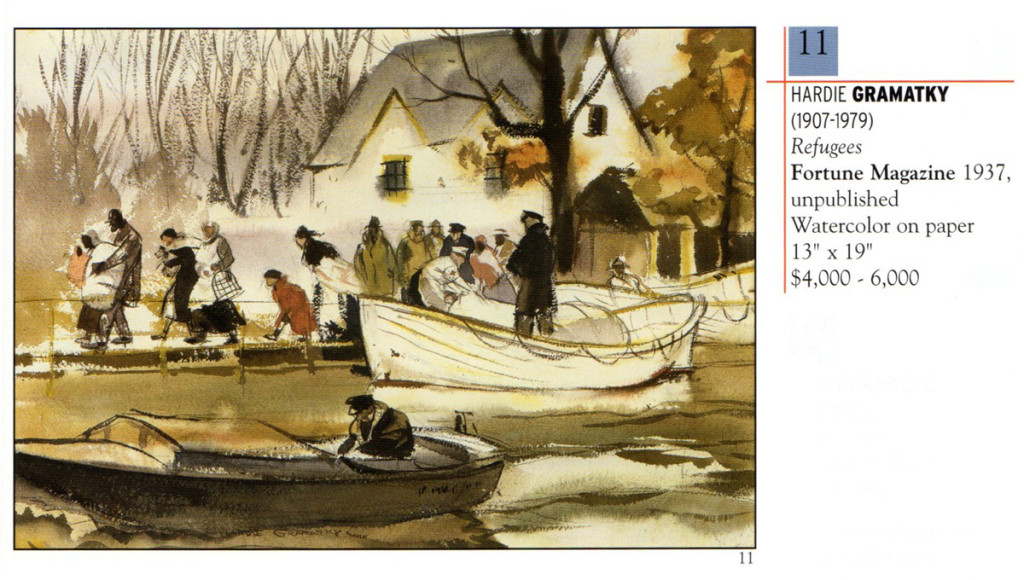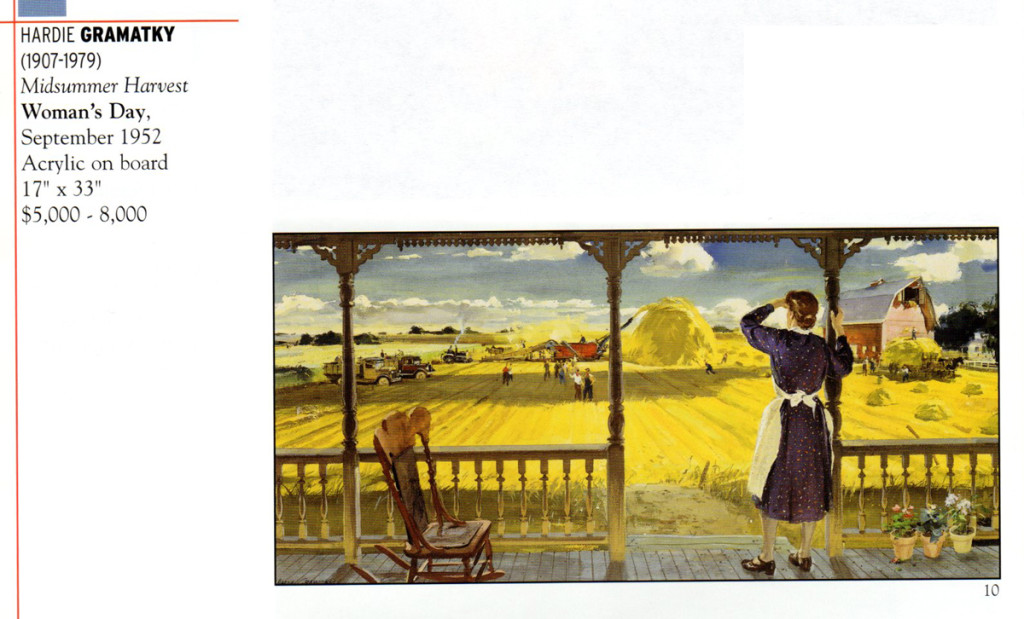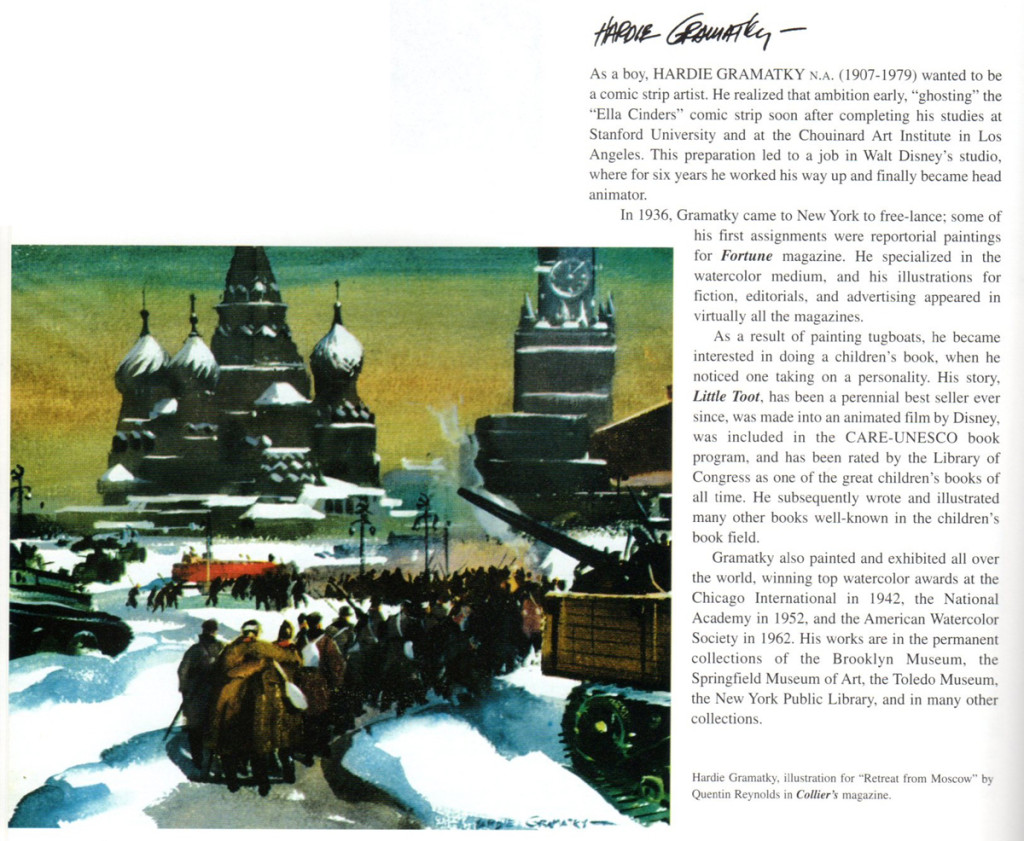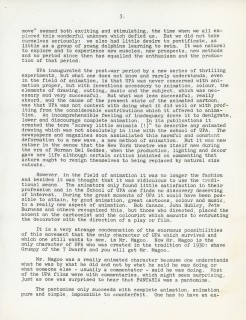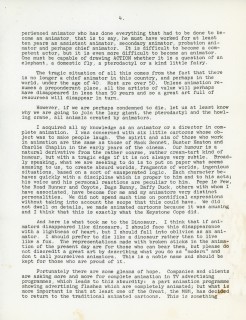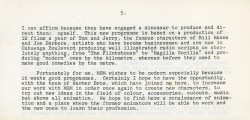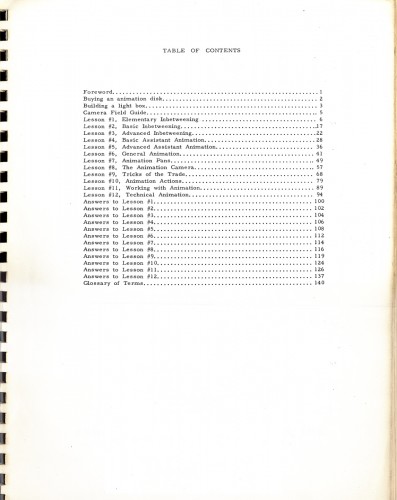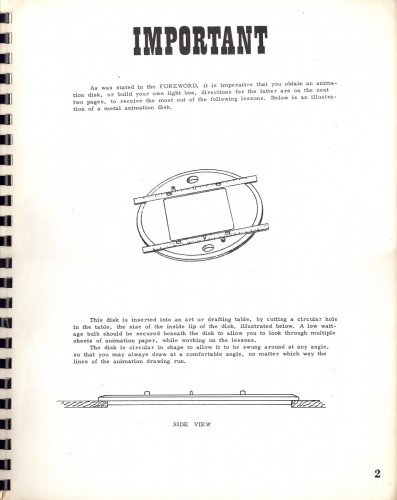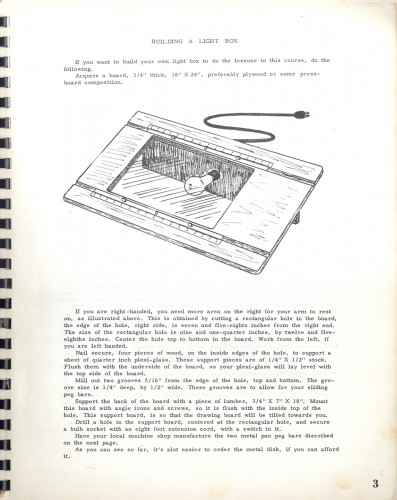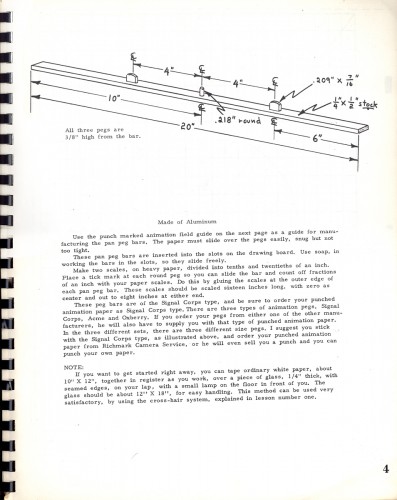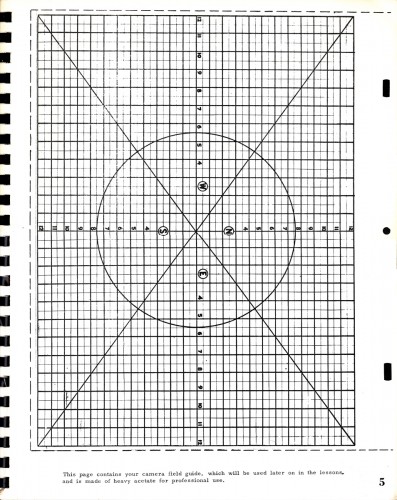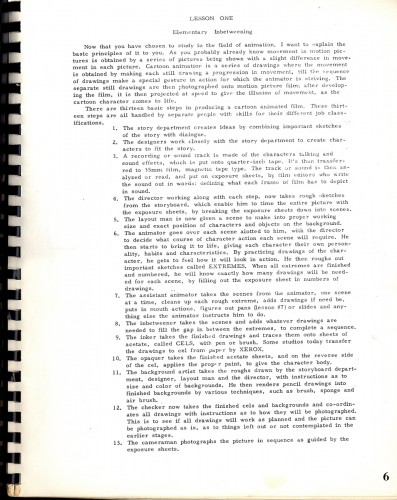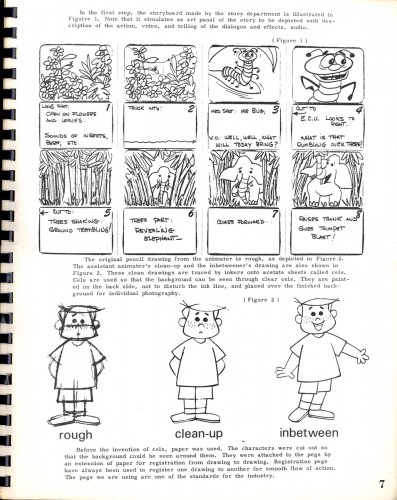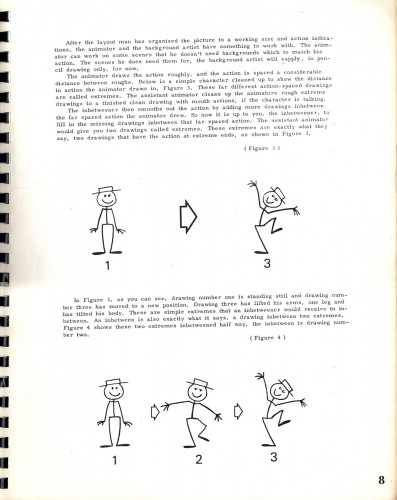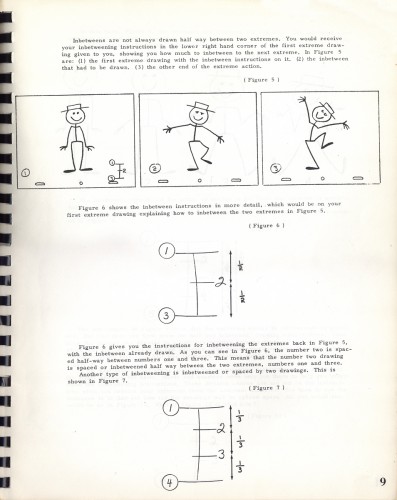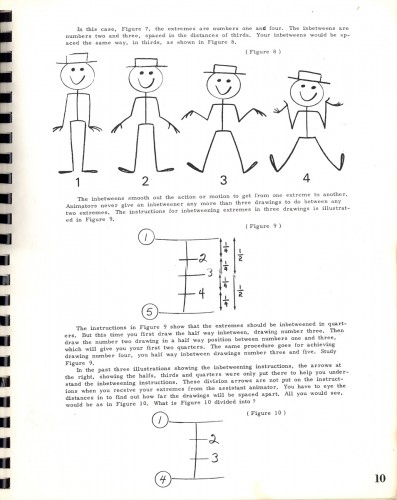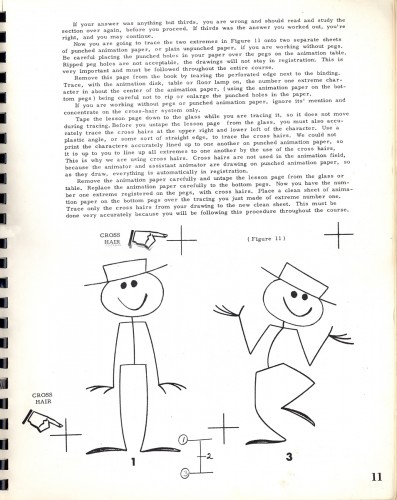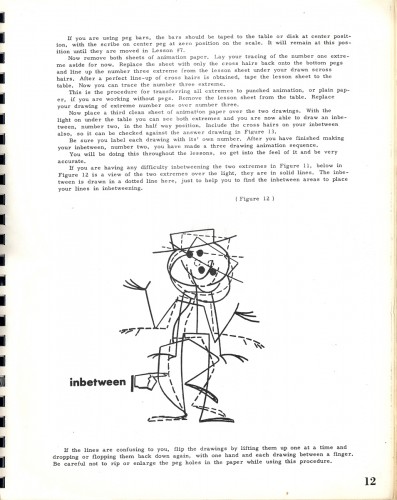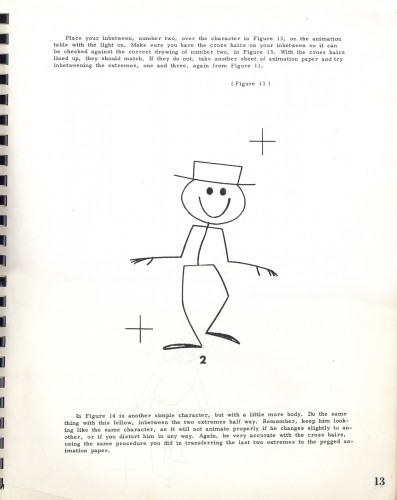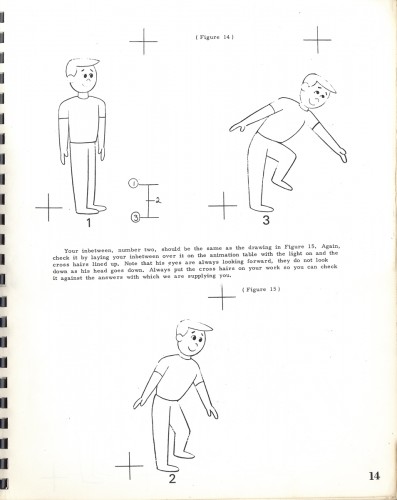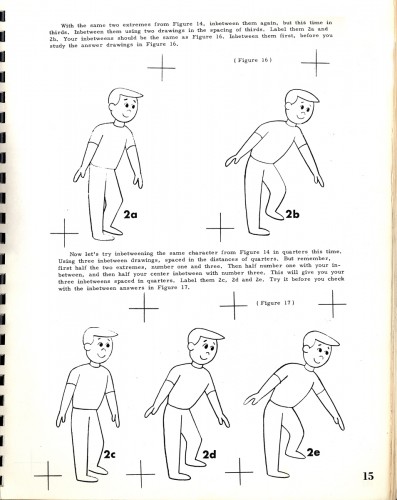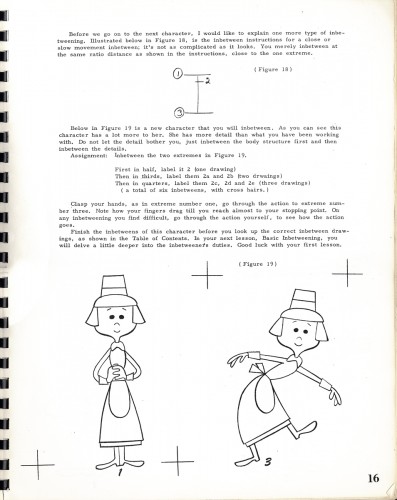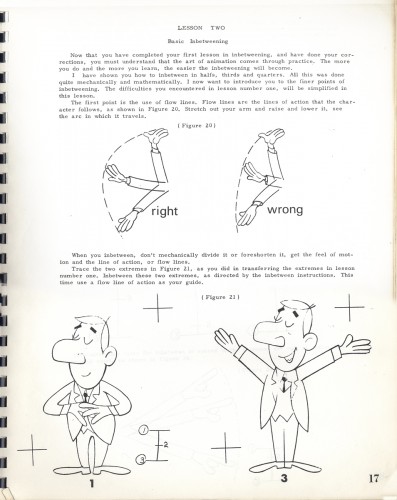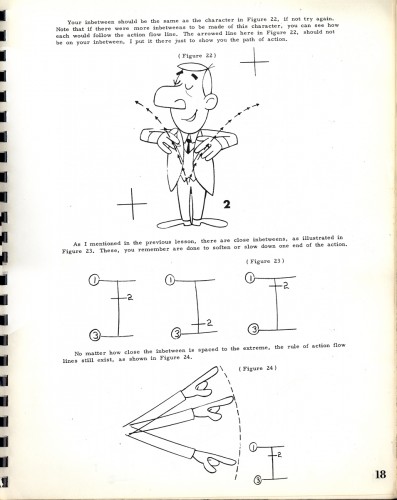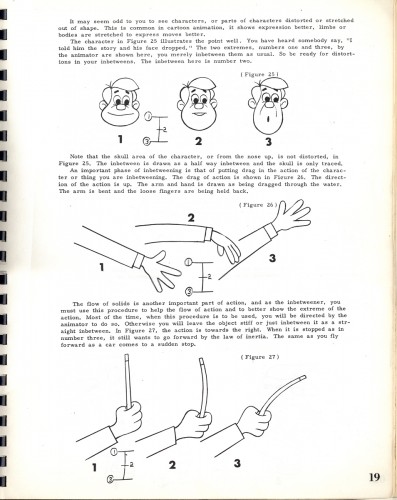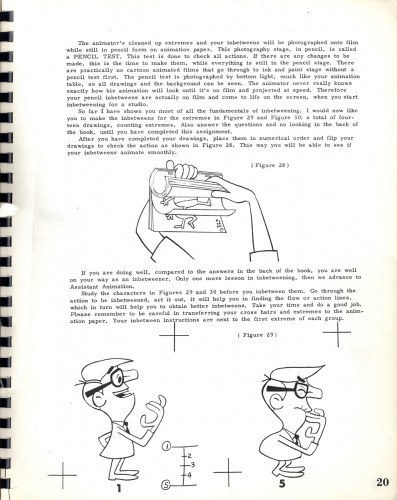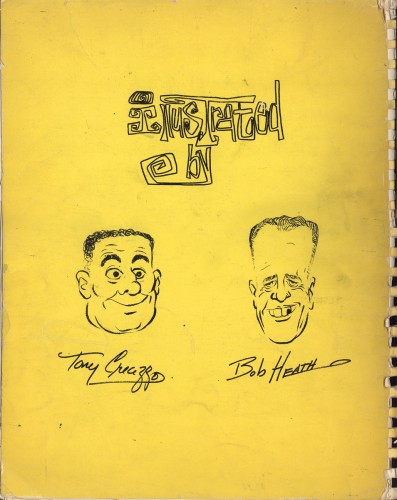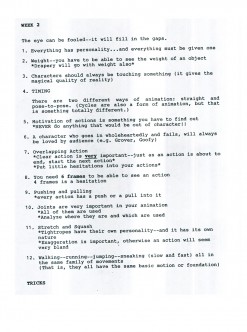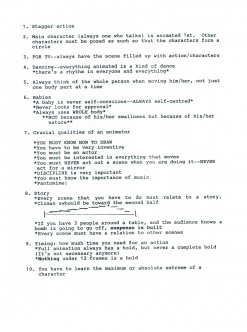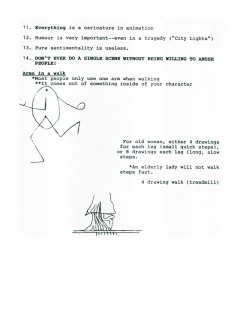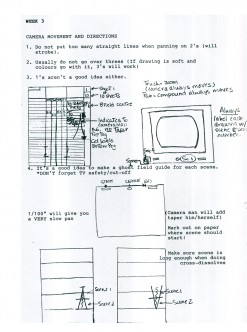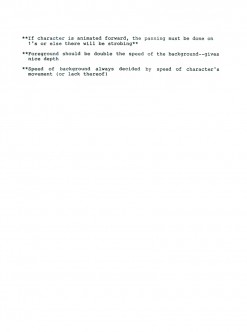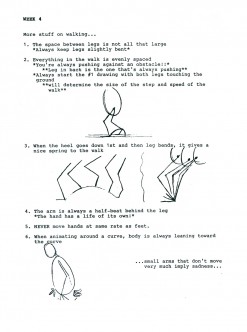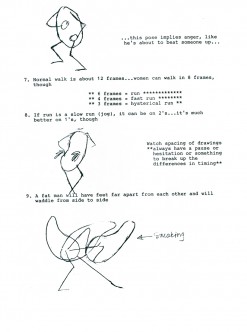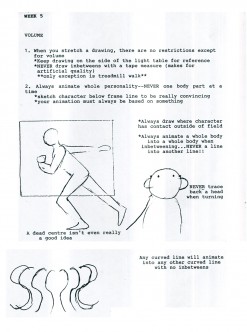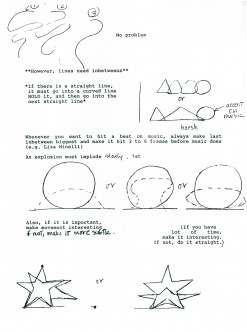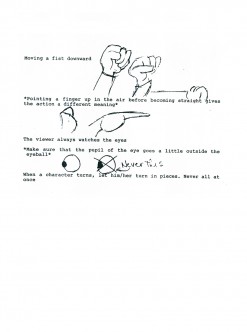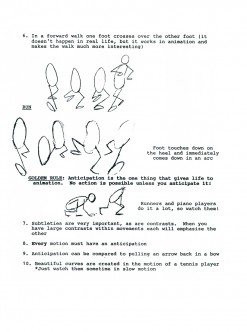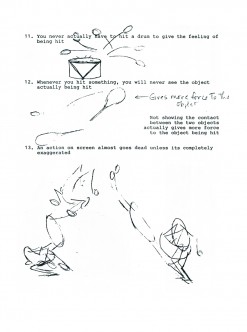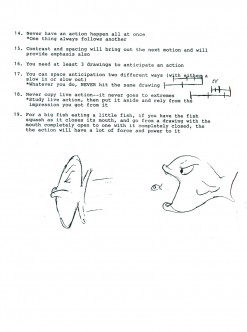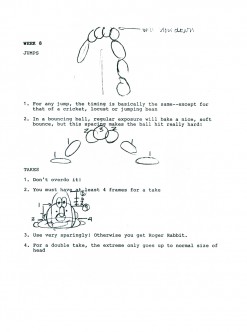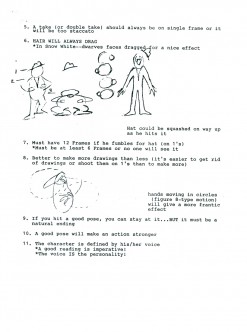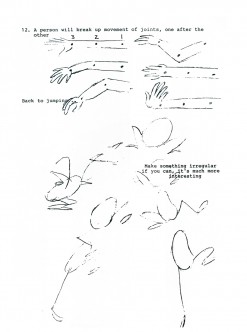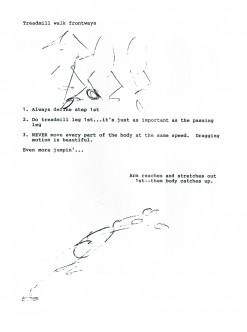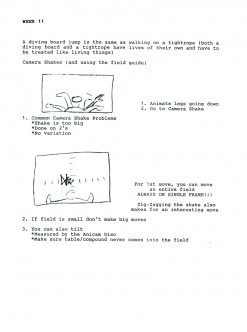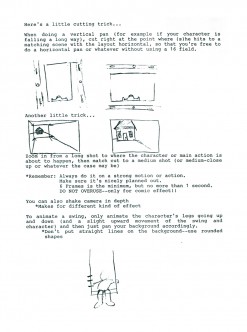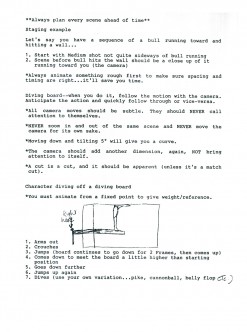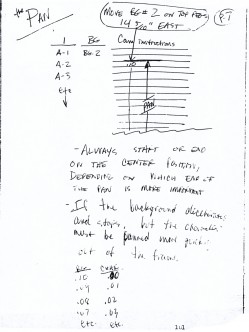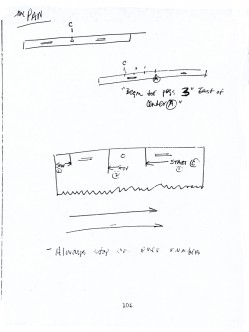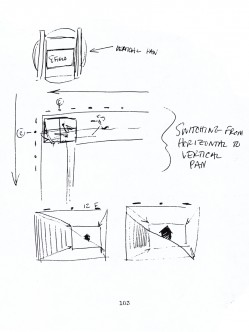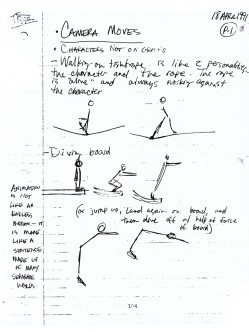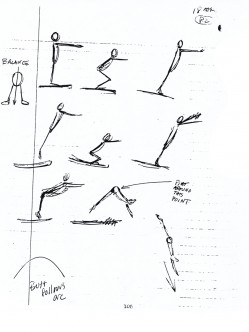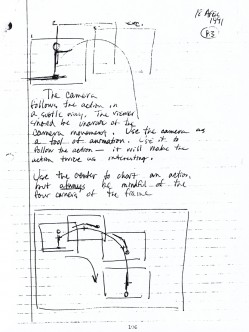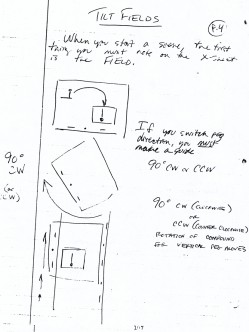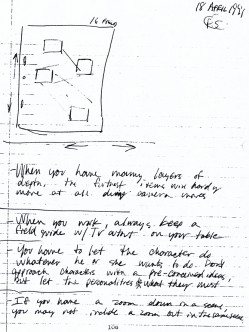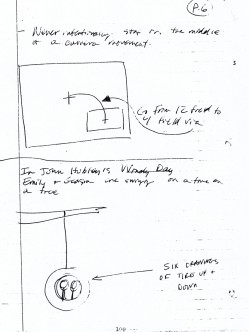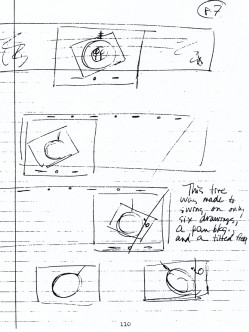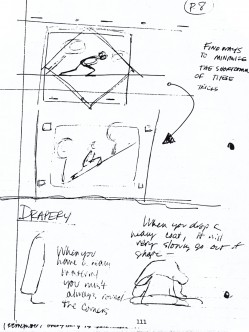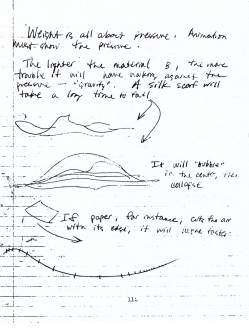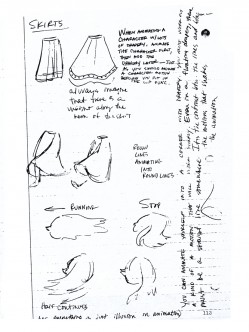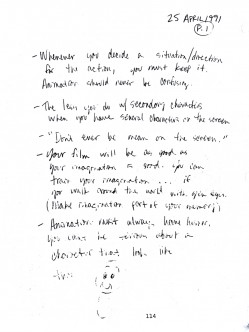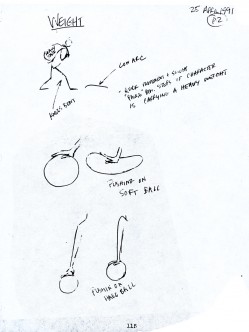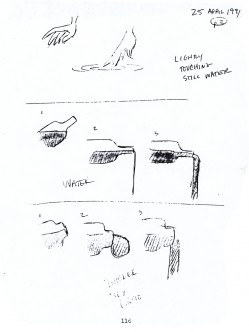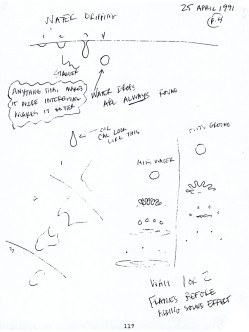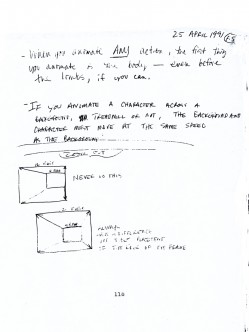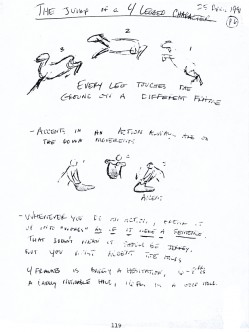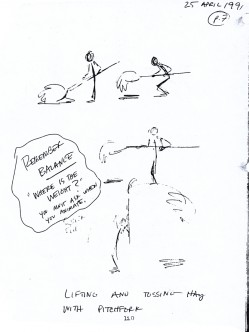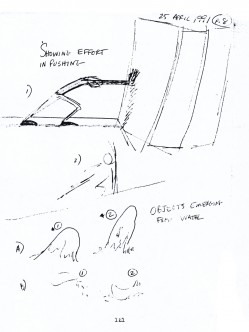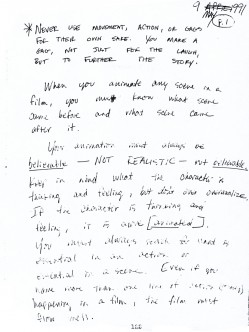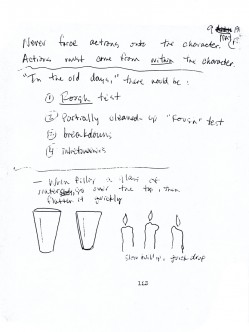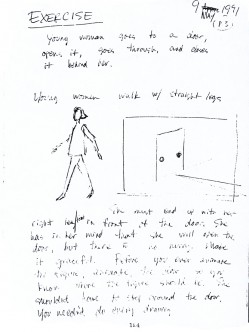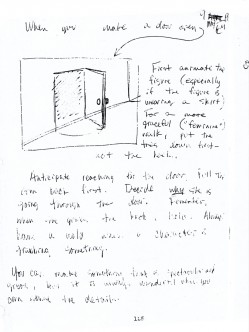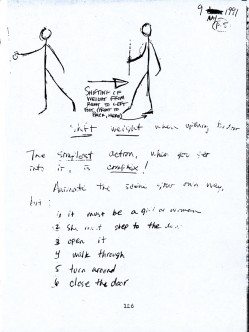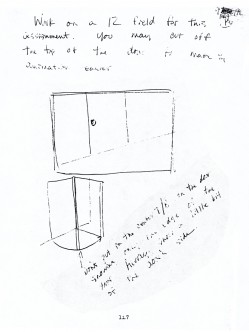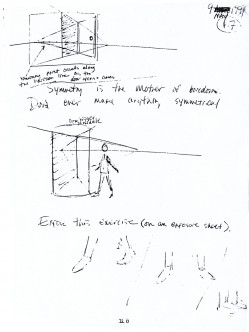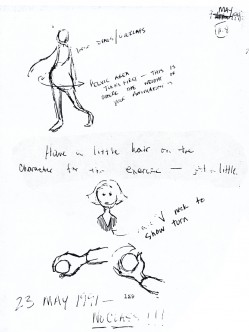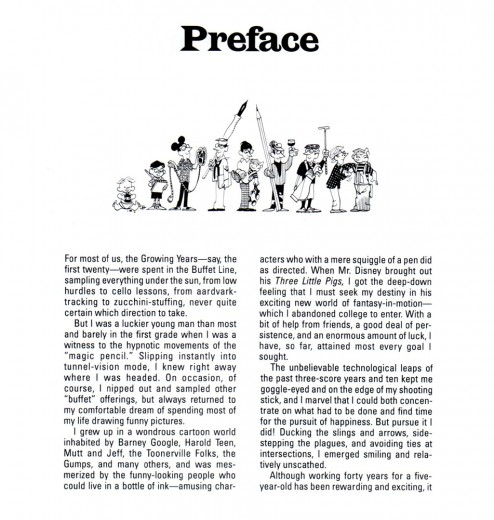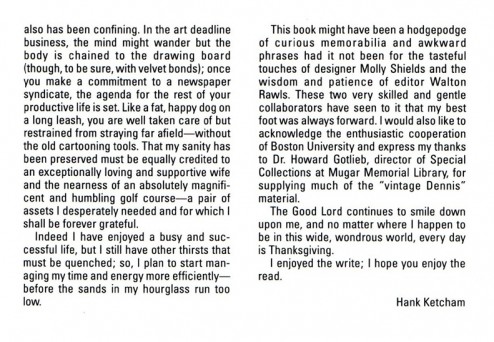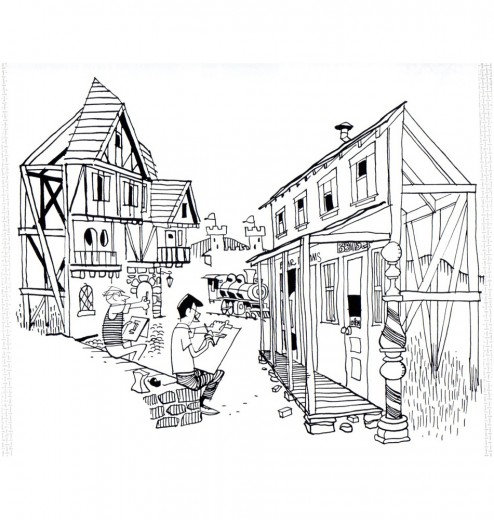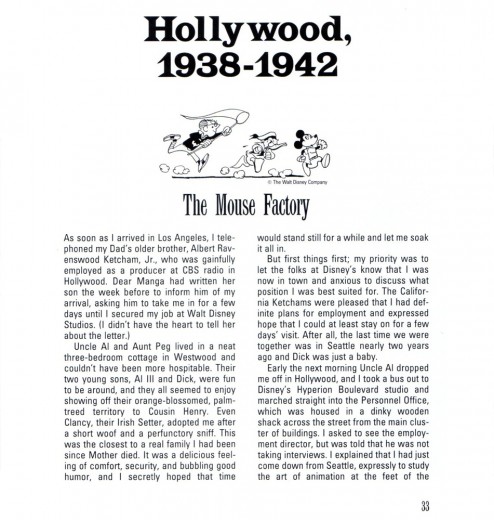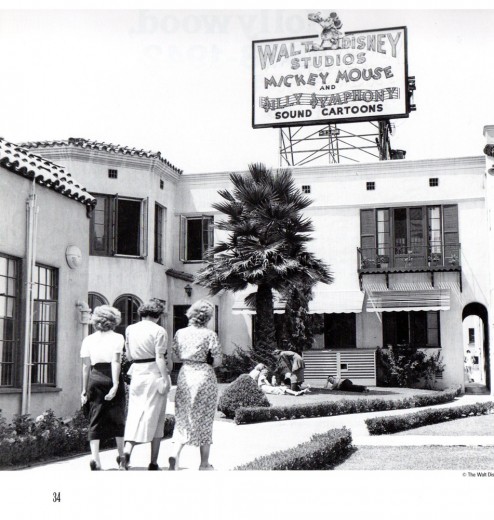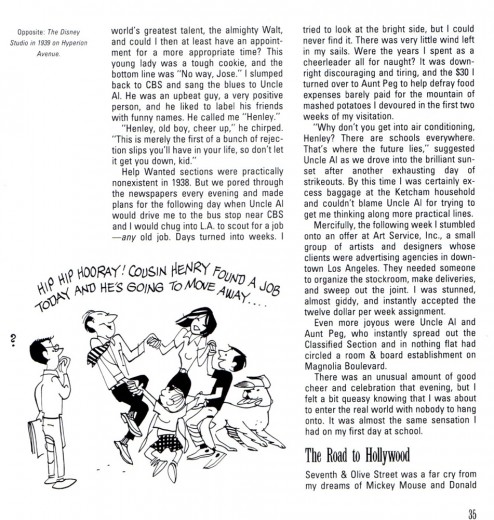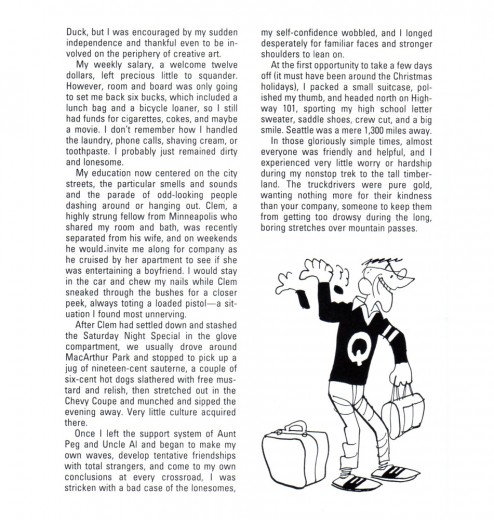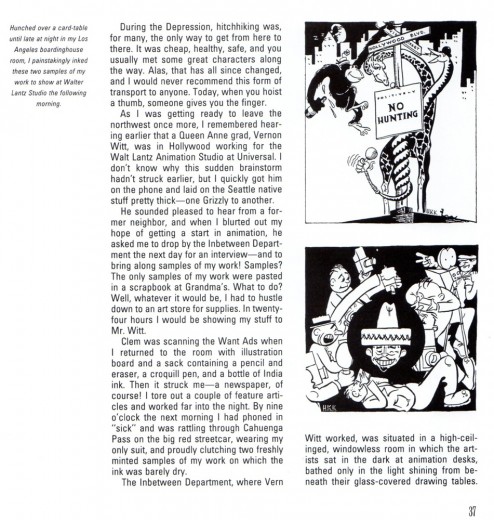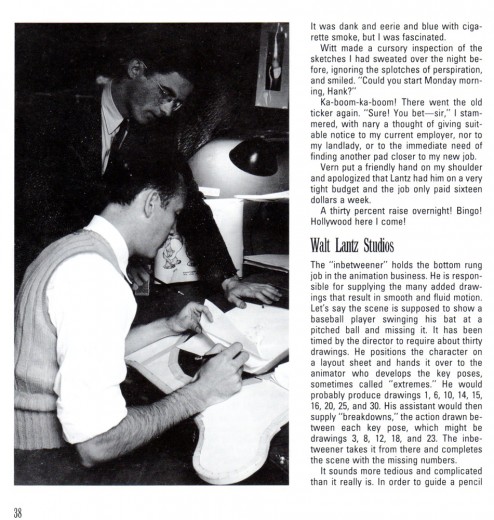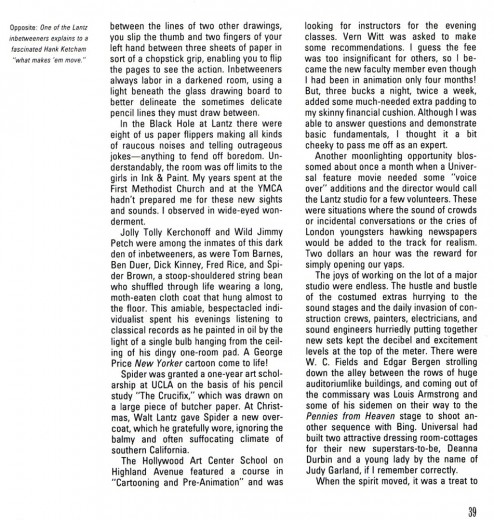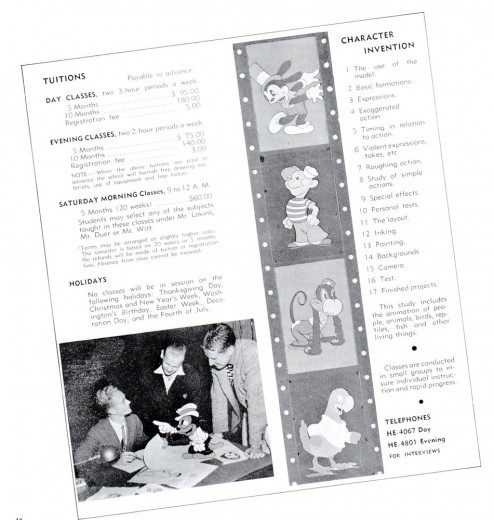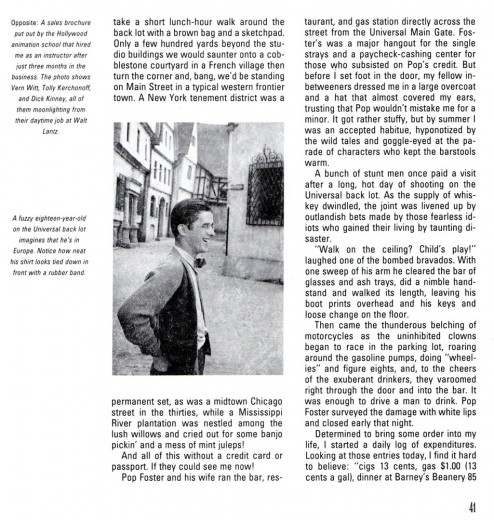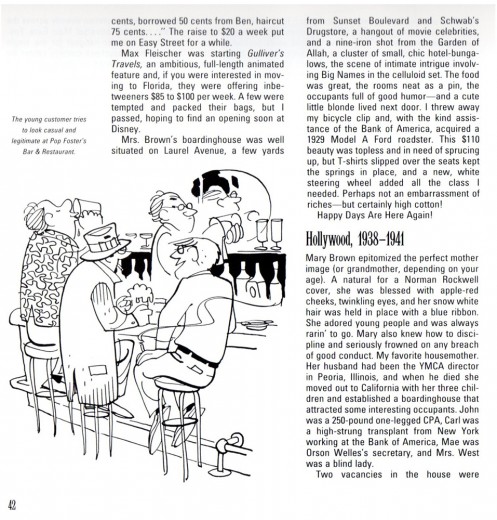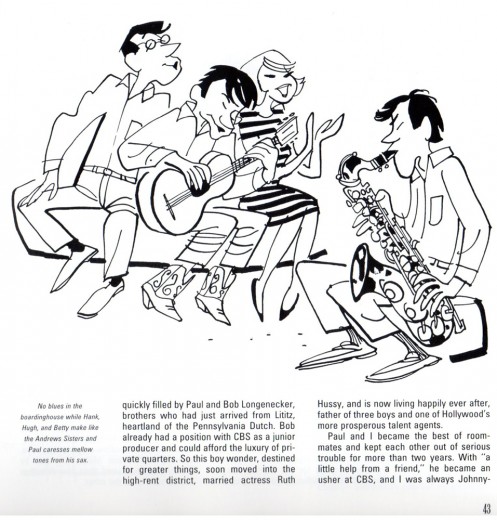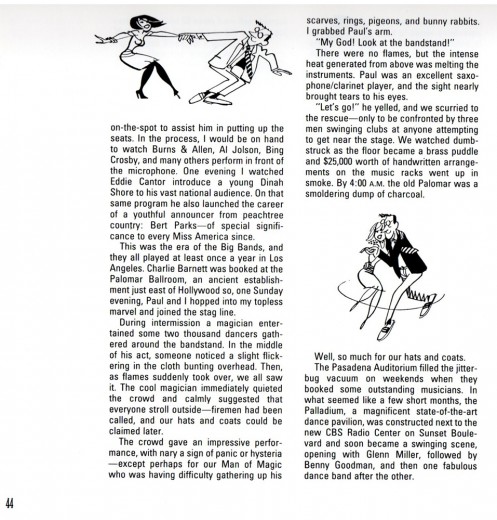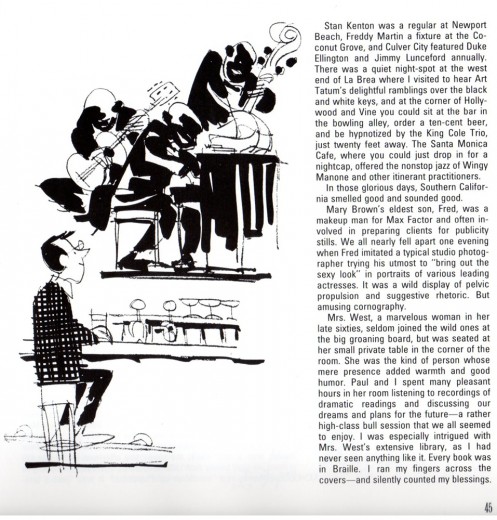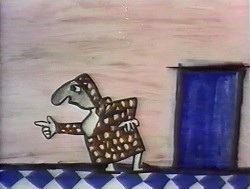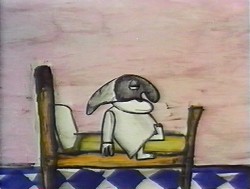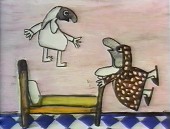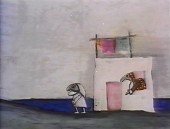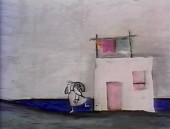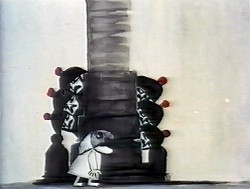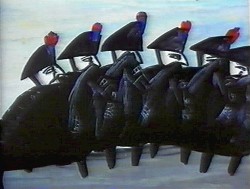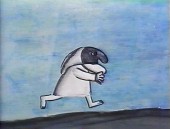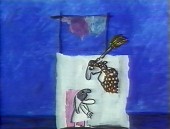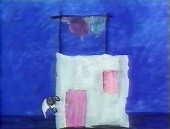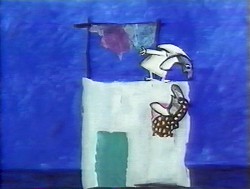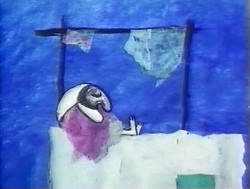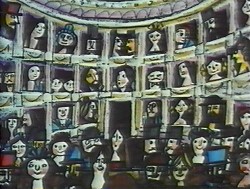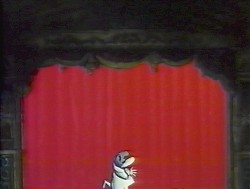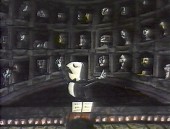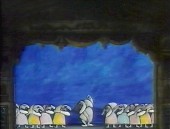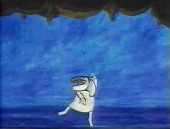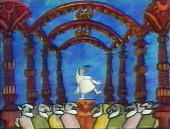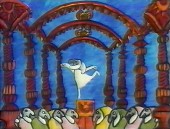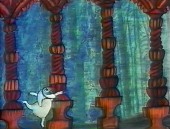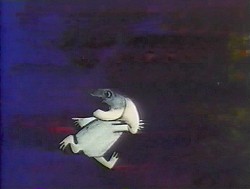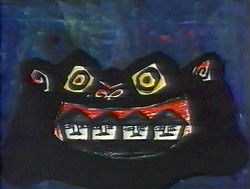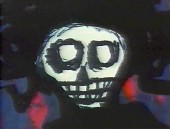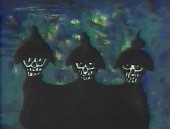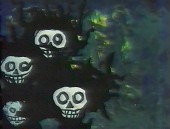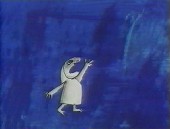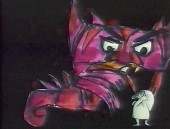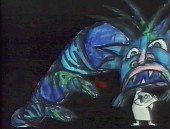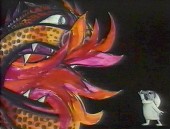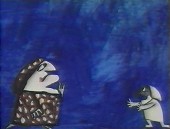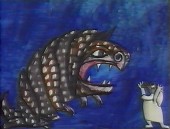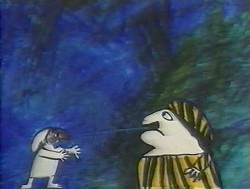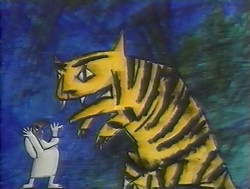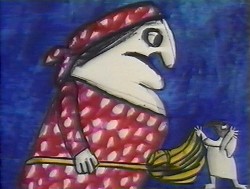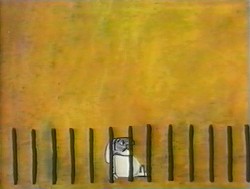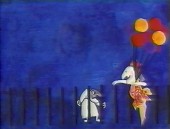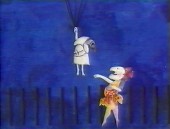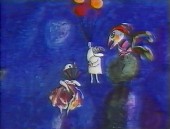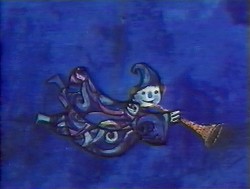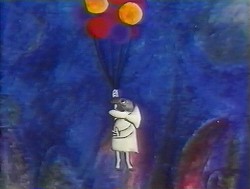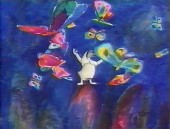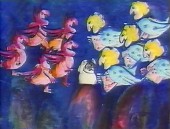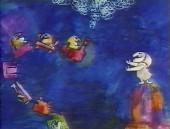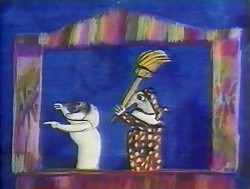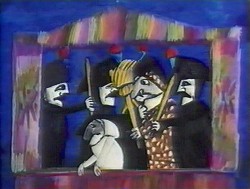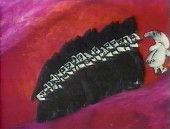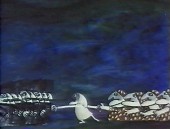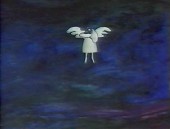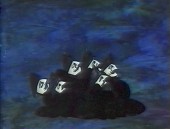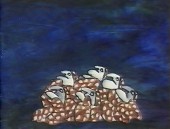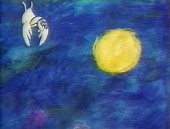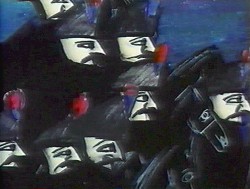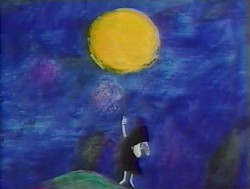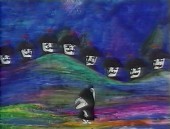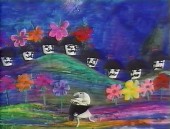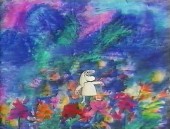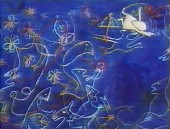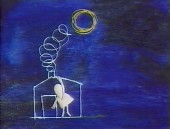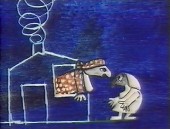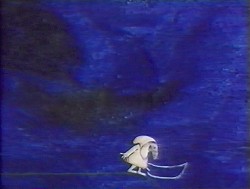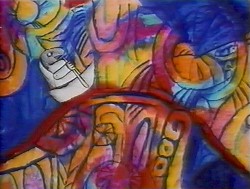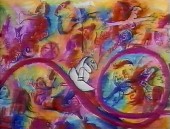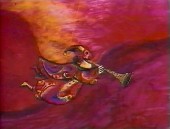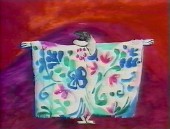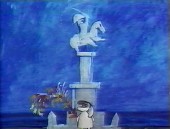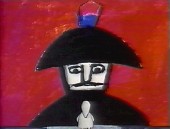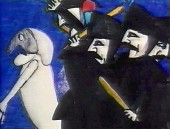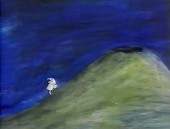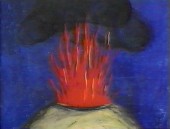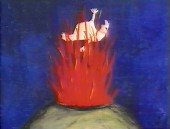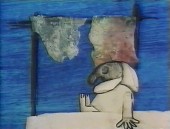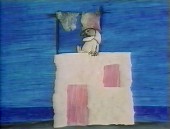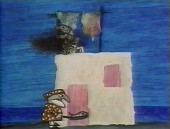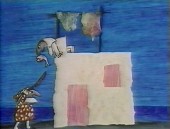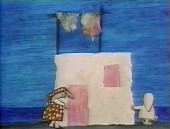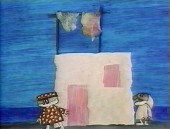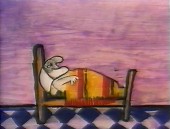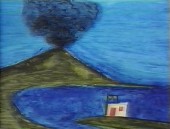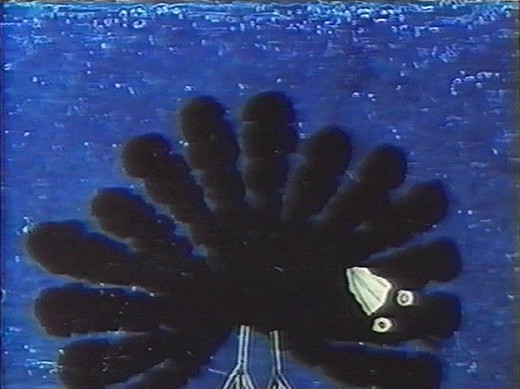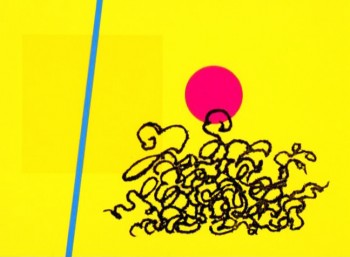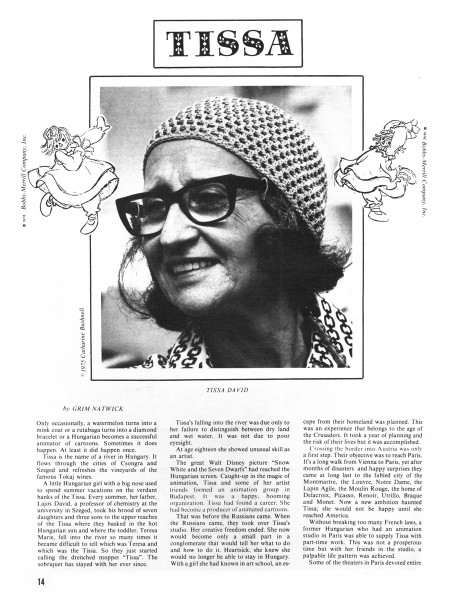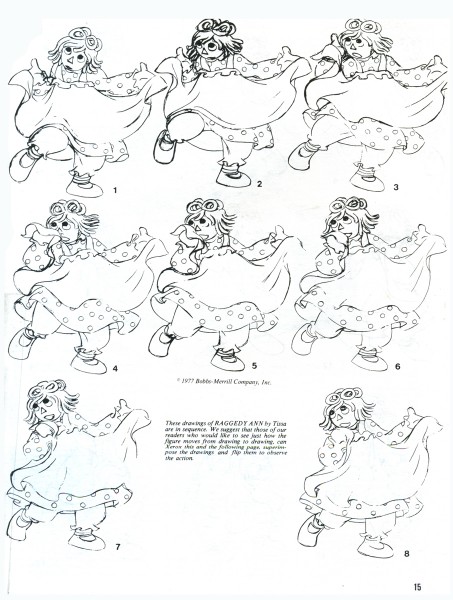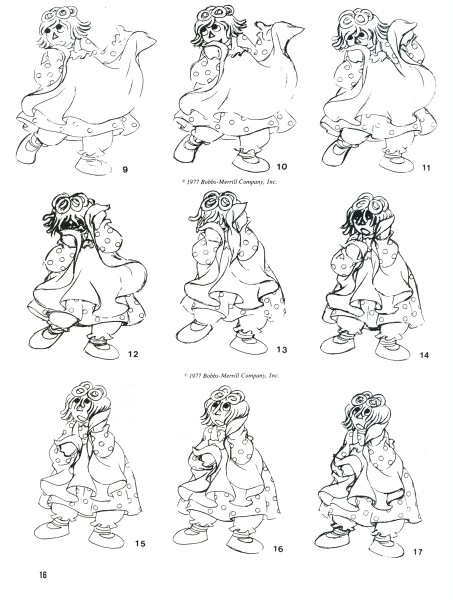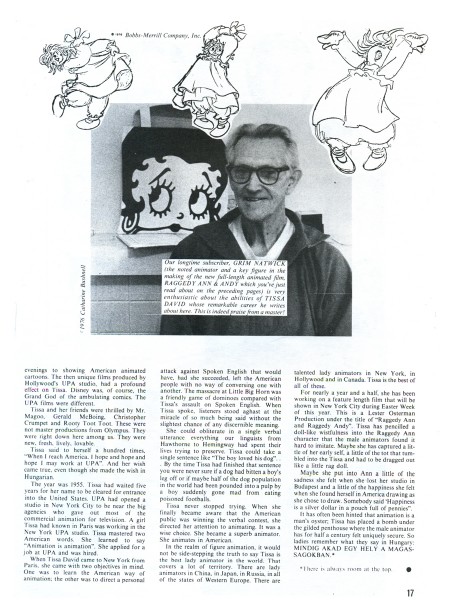Category ArchiveArticles on Animation
Articles on Animation &Bill Peckmann &Books 28 Feb 2013 04:08 am
Hardie Gramatky’s Art
- One of Disney’s early animators who left the studio before it went through its renaissance into the features, was Hardie Gramatky. He came to the studio from Chouinard and had been a brilliant watercolorist even when he entered the studio. While working at Disney by day, he continued to study art at Chouinard by night. After leaving Disney, he focused on his art acting as something of a force in developing the California School of Watercolor, At the same time he did children’s books to earn money. His great claim to fame was the famous children’s book, Little Toot, which, itself, was animated by the studio as part of the feature compilation, Melody Time. The short outlived the feature and has played often developing its own legacy.
Bill Peckmann had sent me this article from Watercolor Magazine, the Fall/2011 issue.
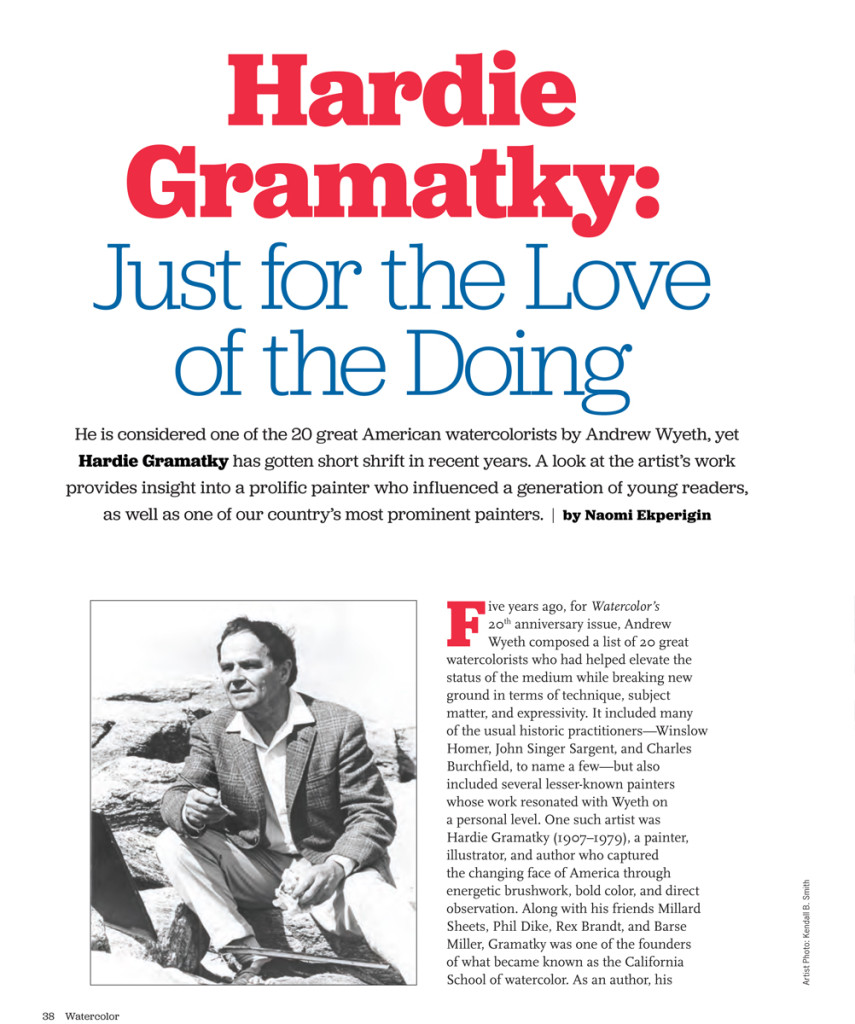 1
1
Bill Peckmann also included clips from this Society of Illustrators, Benefit Centennial Auction, which included the following pieces by Gramatky;
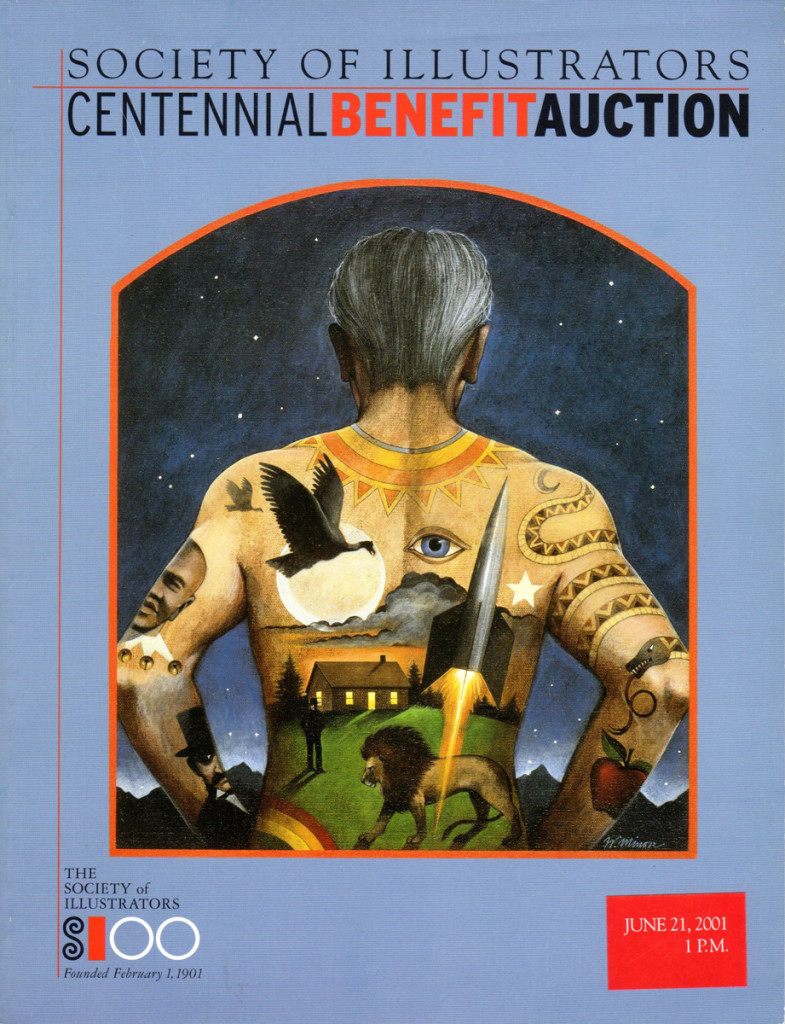
Magazine cover
To get an idea of scenes Gramatky animated at Disney’s here are links to some past drafts that I’ve posted:
Dognapper, The Whoopee Party, Mickey’s Good Deed, The Robber Kitten
The children’s book, Little Toot is large enough that it has its own website.
Articles on Animation &Books &Commentary 18 Feb 2013 04:59 am
Appreciation
The deeper you go, the deeper you go.
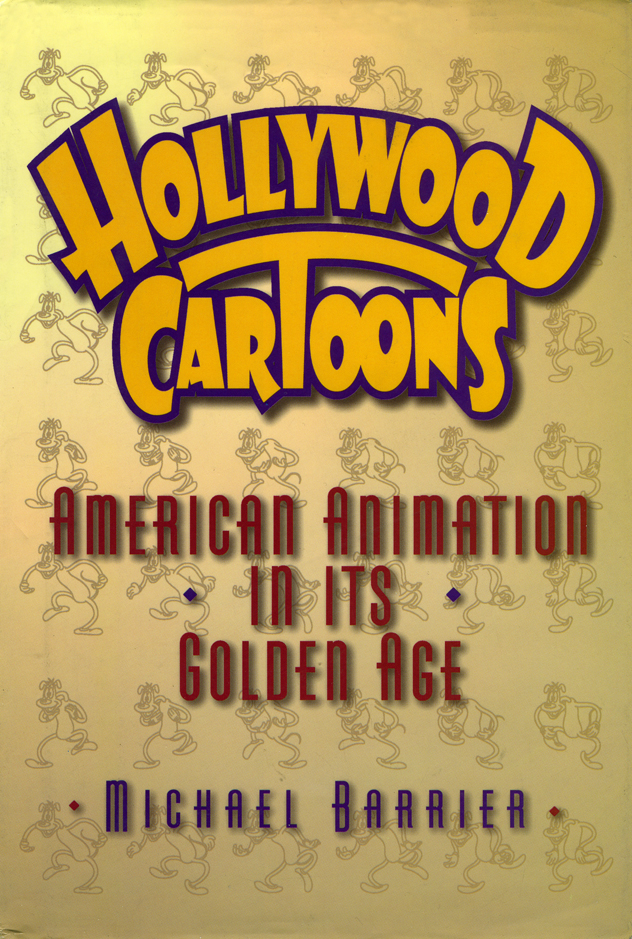 In reviewing the two J.B. Kaufman books on Snow White and the Seven Dwarfs, I found them impeccable in their attempt to reconstruct the making of this incredibly important movie. They followed a strict pattern of analyzing the film in a linear fashion going from scene one to the end.
In reviewing the two J.B. Kaufman books on Snow White and the Seven Dwarfs, I found them impeccable in their attempt to reconstruct the making of this incredibly important movie. They followed a strict pattern of analyzing the film in a linear fashion going from scene one to the end.
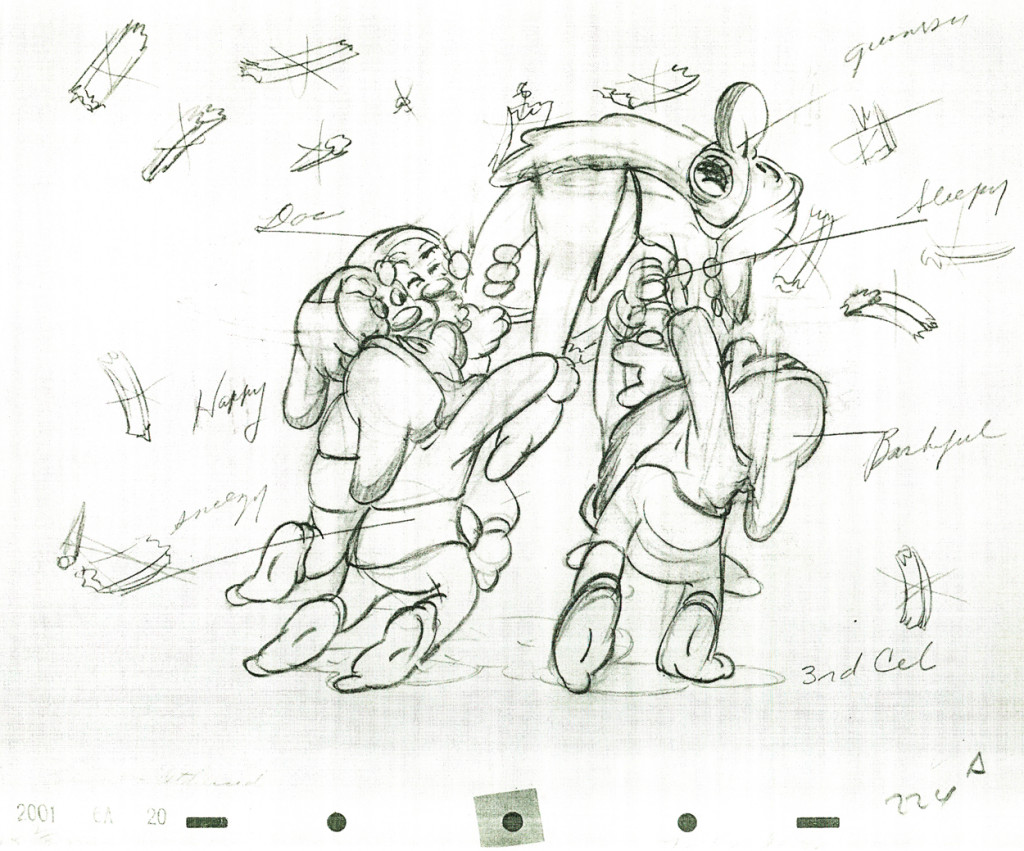 However, the analysis Kaufman offered brought me back to the bible, Mike Barrier‘s Hollywood Cartoons. Rereading his chapter on Snow White, you realize how much depth he offers in a far shorter amount of space. Of course, there are few illustrations in Barrier’s book, but what writing is there is golden. He meticulously analyzes the work of different animators using a very strict code of principles. If you can agree with him, the book he’s written opens up enormously.
However, the analysis Kaufman offered brought me back to the bible, Mike Barrier‘s Hollywood Cartoons. Rereading his chapter on Snow White, you realize how much depth he offers in a far shorter amount of space. Of course, there are few illustrations in Barrier’s book, but what writing is there is golden. He meticulously analyzes the work of different animators using a very strict code of principles. If you can agree with him, the book he’s written opens up enormously.
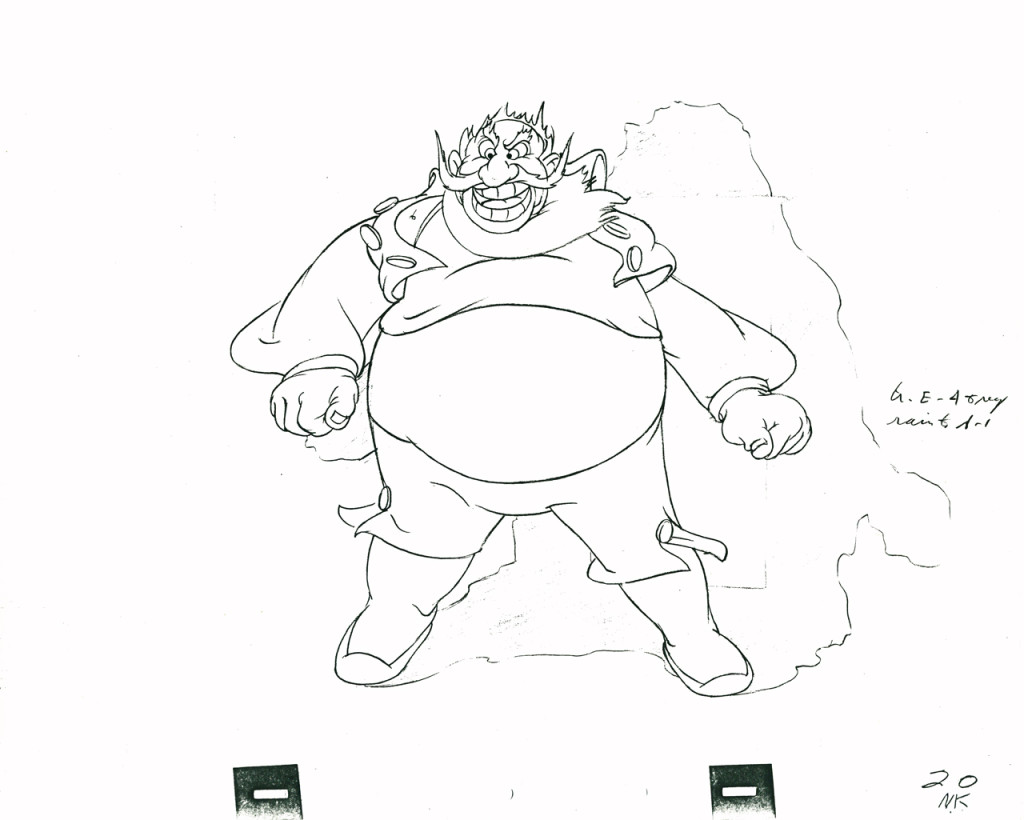 Once you get to the chapter, post-Snow White, which catalogues the making of Pinocchio, Fantasia, Bambi and Dumbo you are in the deep water. Mike pointedly criticizes some of the greatest animation ever done. His analysis of Bill Tytla’s Stromboli is ruthless. Though I am an enormous fan of this animation, I cannot say I disagree with what he has to say. Though I think differently of the animation.
Once you get to the chapter, post-Snow White, which catalogues the making of Pinocchio, Fantasia, Bambi and Dumbo you are in the deep water. Mike pointedly criticizes some of the greatest animation ever done. His analysis of Bill Tytla’s Stromboli is ruthless. Though I am an enormous fan of this animation, I cannot say I disagree with what he has to say. Though I think differently of the animation.
Here’s a long excerpt from this chapter:
- No animator suffered more in this changing environment than Tytla. His expertise is everywhere evident in his animation of Stromboli—in the sense of Stromboli’s weight and in his highly mobile face—but however plausible Stromboli is as a flesh-and-blood creature, there is in him no cartoon acting on the order of what Tytla contributed to the dwarfs. At Pinocchio’s Hollywood premiere, Frank Thomas said, W. C. Fields sat behind him, “and when Stromboli came on he muttered to whoever was with him, ‘he moves too much, moves too much.’” Fields was right-although not for the reason Thomas advanced, that Stromboli “was too big and too powerful.”
- In the bare writing of his scenes, Stromboli, more than any of the film’s other villains, deals with Pinocchio as if he were, indeed, a wooden puppet—suited to perform in a puppet show, and perhaps to feed a fire—rather than a little boy. But the chilling coldness implicit in the writing for Stromboli finds no echo in the Dutch actor Charles Judels’s voice for the character. Judels’: Stromboli speaks patronizingly to Pinocchio, as he would to a gullible child, and his threat to use Pinocchio as firewood sounds like a bully’s bluster. As Tytla strained to bring this poorly conceived character to life, he lost the balance between feeling and expression. The Stromboli who emerges in Tytla’s animation is too vehement, “moves too much”; his passion has no roots, and so he is not convincing as a menace to Pinocchio, except in the crudest physical sense. There is nothing in Stromboli of what could have made him truly terrifying: a calm dismissal of Pinocchio as, after all, no more than an object.
- To some extent, Tytla may have been overcompensating for live action that even Ham Luske acknowledged was “underacted.” But Luske defended the use of live action for Stromboli by arguing that it had kept Tytla on a leash: “If he had been sitting at his board animating, without any live action to study, he might have done too many things.”
I agree, as Barrier says, that Stromboli is a flawed character, and I agree that the movement is broad and overstated. However, I think that this was Tytlas’s only possible entrance into the material, into trying to further the characterization. No, it could not be as deep as the work he’d done on Grumpy in Snow White, but the character of Stromboli isn’t as small as that name, “Grumpy”. A lot more was offered and had to be circled to simplify as best as possible for the small amount of screen time he would have in Pinocchio. And, yes, he comes off like a blowhard with a lot of bluster. But that’s not the way Pinocchio sees him. Pinocchio is made of wood, as Stromboli reminds us, but he is also an innocent, a child learning about the world.
Barrier’s chapter, as I said, moves quickly through this material covering four of the greatest Disney films; no, four of the greatest animated features ever done. In relatively few pages you feel as though he’s gotten it all in there and has even said more in depth than almost any historian about this period of Disney animation. I’ve read this chapter at least a dozen times, and it continues to grow richer for me. I think it’s possible the greatest piece ever written about animation.
Barrier’s writing, vocabulary, choice of phrase is all charged to keep the material tight. He’s writing a large book, and he has to get a lot in.
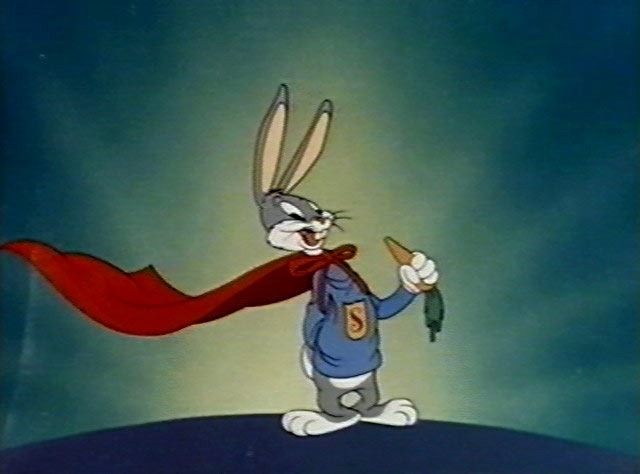 Perhaps some day he will have one of those big picture books to write where he will have the freedom to expound on the material. I did once read such a book. Mike Barrier had been employed to write a history of the Warner Bros. studio, and I got to read the first draft of the manuscript. I had a couple of hours and sat in a chair, thumbing pages. The images that were to be in the book were on large chromes. It was all an extraordinary experience for me, and I remember it somewhat hazily, as if remembering a golden afternoon. Of course that book was cancelled when management changed hands, and the world lost a great book.
Perhaps some day he will have one of those big picture books to write where he will have the freedom to expound on the material. I did once read such a book. Mike Barrier had been employed to write a history of the Warner Bros. studio, and I got to read the first draft of the manuscript. I had a couple of hours and sat in a chair, thumbing pages. The images that were to be in the book were on large chromes. It was all an extraordinary experience for me, and I remember it somewhat hazily, as if remembering a golden afternoon. Of course that book was cancelled when management changed hands, and the world lost a great book.
Can there be any wonder that I go to the Barrier website daily, knowing full well that it’s often months between posts? I just keep looking for new material from him, and will continue my daily routine hoping for the small brightly colored package on his site. It’s almost important for there not to be frequent posts or the new ones wouldn’t always shine as well. However, two or three times a year, there is something rich there, and my search has brought the golden fish. (Yes, I’m exaggerating somewhat like Tytla did in his animation of Stromboli. But the point gets made.)
Even if there’s nothing new there, there’s plenty old. Many old Funnyworld articles or interviews done with Milt Gray. It’s a deep site full of deep writing.
Articles on Animation &Books &Chuck Jones &Independent Animation 15 Dec 2012 07:18 am
Moviesmoviesmovies
- Turn around, and it’s the weekend again. I guess that’s a good thing. But Christmas seems to be coming so quickly these days. It was only yesterday that I was complaining that they were pushing Christmas on us so soon after Thanksgiving. Christmas carols when we had hardly finished eating the turkey! Maybe they were right.
As we get closer to Christmas there are fewer and fewer Academy events. Things were mellowing out already this past week. I was so happy to not have had a dinner or a lunch or a screening to attend last Sunday. I stayed home and was quiet while the weather, outside, was pretty lousy. One of those days where the rain is light enough that you feel stupid opening an umbrella, but the wind and the temperature made it so bitter out that it was great to be indoors – anywhere.
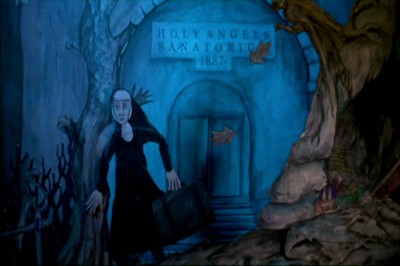 On Monday, I’d picked up a DVD for the animated feature, Consuming Spirits, at the Film Forum theater. The film should be seen on a big screen. It was shot in 16mm and looked pretty darn good in DVD. The story is complex, so I’m sure watching it focused in a theater would be better for the film. However, I loved it, just the same, and my review in the Splog on Tuesday was a foreshadowing of some of the reviews that appeared in the NY papers on Wednesday when it officially opened. This movie will be playing through Christmas Day; treat yourself.
On Monday, I’d picked up a DVD for the animated feature, Consuming Spirits, at the Film Forum theater. The film should be seen on a big screen. It was shot in 16mm and looked pretty darn good in DVD. The story is complex, so I’m sure watching it focused in a theater would be better for the film. However, I loved it, just the same, and my review in the Splog on Tuesday was a foreshadowing of some of the reviews that appeared in the NY papers on Wednesday when it officially opened. This movie will be playing through Christmas Day; treat yourself.
It’s very positive that A.O.Scott in the NYTimes chose his top ten flms of the year. As usual he adds another five or six which he call his “honorable mention” list of films that came close to being in his top ten. Consuming Spirits was one of these “honorable mention” movies that take on a nice prominence.Mind you that I don’t always agree with Mr.Scott (e.g. my favorite movie of the year is not to be found on his list), but I do take pleasure when I see such a deserving, small film get the attention it deserves.
Read A.O. Scott‘s review for the NYTimes here.
Read the 3 star review by Farran Smith Nehme for the NYPOST here.
On Tuesday there was a luncheon at the Four Seasons for Les Mis̩rables. Some of the cast РAnne Hathaway, Hugh Jackman, Eddie Redmayne, Amanda Seyfried and Samantha Barks were all there. We entered a different room this time; this one had a piano bar playing. Uh oh.
During the meal, director Tom Hooper announced that, even though they’d had a late night the night before – there was a lot of drinking, I guess, at the premiere – the cast was itching to sing for us. Samantha Banke, who did a lot of musical theater in England,sang “Summertimne”. This was an odd choice given the temperature outside, but she did a great job. Hugh Jackman then sang a song to his wife which was a love letter to her. Anne Hathaway followed singing a Christmas carol with Eddie Redmayne, Amanda Seyfried and Hugh Jackman doing backup. Coffee was served and the lunch ended quickly. Tom Hooper didn’t even recite a poem, but he did take photos of the crowd with his cel phone.
On Thursday I went to an Academy screening of The Hobbit. If it resembled any of the Lord of the Rings movies (with endless battles going on among millions of computerized creatures) I was prepared to walk out. The film felt as though it had been written by one of those geeks you meet at Comic Con. Completely amateurish dialogue with cliché following cliché while all this good stuff passed on screen visually. The near-three hour length was exhausting. The score is great and Ian McKellan is a blessing.
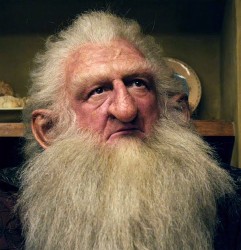 The film was shot at 48 frs per sec (and projected back at the same rate) which created a sharper more defined focus, closer in look to hi def video than film. There was one character, covered in hair, who I found extraordinary to watch without my 3D glasses. The focus on his skin was amazing, and I spent a lot of the first hour searching for shots of him without my glasses on. I later learned the character’s name, Balin. I hate to say it, but that was really the height of the film for me.
The film was shot at 48 frs per sec (and projected back at the same rate) which created a sharper more defined focus, closer in look to hi def video than film. There was one character, covered in hair, who I found extraordinary to watch without my 3D glasses. The focus on his skin was amazing, and I spent a lot of the first hour searching for shots of him without my glasses on. I later learned the character’s name, Balin. I hate to say it, but that was really the height of the film for me.
I also have to agree that the animation of the gollum was quite amazing. Not as good as the tiger in Pi, but worth the cost of admission for an animator. If Andy Serkis has anything to do with it, I applaud him.
On Friday night I followed up an ad in Variety that indicated a screening in town of the
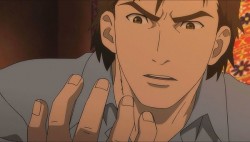 Japanese animated feature, The Mystical Laws, was showing for Academy members. In the end, I couldn’t go; work finally got in the way.
Japanese animated feature, The Mystical Laws, was showing for Academy members. In the end, I couldn’t go; work finally got in the way.
I still want to see Goro Myazaki‘s film From Up on Poppy Hill. I know that Bill Plympton hated it, but he and I often disagree on movies. The film won the Japanese equivalent of the Oscar, and it did enormously well in Japan. Somebody liked it; there’s got to be something good there. I’m going to keep my eyes open for it; usually GKids ‘ distributing it means there will be a chance of its eventually playing.
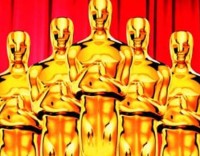 Today, Saturday, the Academy has its screening of animated and live action shorts. The short-list (ten animated and ten live-action) will screen so we can narrow the selection down to five films for each category. I can select the animated films from my home since I saw them all and remember the ones
Today, Saturday, the Academy has its screening of animated and live action shorts. The short-list (ten animated and ten live-action) will screen so we can narrow the selection down to five films for each category. I can select the animated films from my home since I saw them all and remember the ones
I like. However, I haven’t seen the live action shorts and want to vote for them. So we start with animated films at 10am, live-action at noon, and we continue through till about four or five. There’s a lunch at 1pm. A long day of movies. Looking forward to it.
To add a bit of punch to this post, I’m placing an article Chuck Jones wrote in 1965 for an ASIFA International bulletin just prior to one of the early Annecy Animation Festivals.
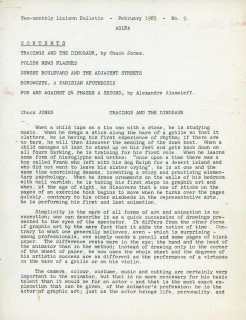 1
1 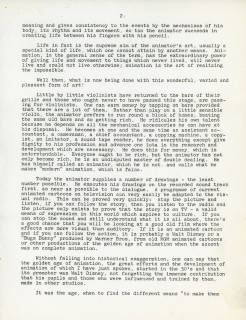 2
2(Click any image to enlarge.)
Animation &Articles on Animation &Books &commercial animation &Illustration 03 Dec 2012 07:55 am
Heath Book – 1
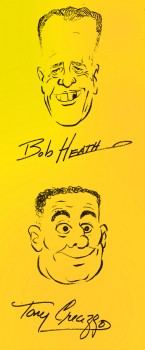 - Back in the days when animation books were a rarity and actual lessons in books were few and far between, there were Heath Books and equipment. This was a company, if I can remember correctly, which was situated in Florida. They had several books for sale, the most well known was “Animation In Twelve Hard Lessons”. It was spiral bound book and over-sized like the Preston Blair book, it contained detailed instruction on the mechanics of animation.
- Back in the days when animation books were a rarity and actual lessons in books were few and far between, there were Heath Books and equipment. This was a company, if I can remember correctly, which was situated in Florida. They had several books for sale, the most well known was “Animation In Twelve Hard Lessons”. It was spiral bound book and over-sized like the Preston Blair book, it contained detailed instruction on the mechanics of animation.
Bob Heath, I believe, was a former cameraman in animation, and his partner in writing was Tony Creazzo, a former Assistant Animator. If I remember correctly, he was closely aligned with Vinnie Bell in New York. The two were always connected; if you wanted Vinnie to animate, you also hired Tony to assist.
Well, not only did Bob Heath sell How-to books on animation, but he also sold equipment. Paper, pencils, hole punches, even an Oxberry Jr. camera stand could be bought from the company. They had an original design of a light box for sale. Lots of things that could help you set up in the animation business if you had no idea who “Cartoon Colour” was.
I’ve decidded to post this relic of a book, Here in the first chapter is Bob Heath’s “How to Animate in 12 Hard Lessons.”
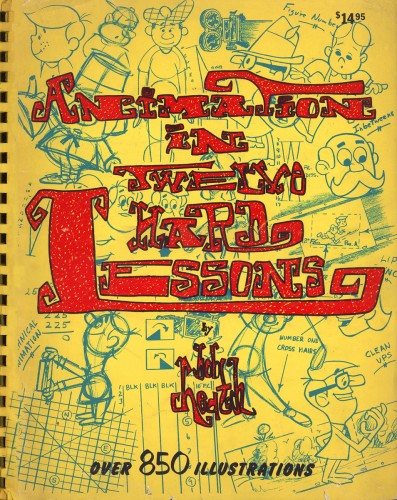
Front Cover
Animation Artifacts &Articles on Animation &Independent Animation &Tissa David 22 Nov 2012 07:15 am
Tissa’s Notes – recap
_____________________________
- For the past few Thursdays, I’ve been posting a notebook that animator, Eugene Salandra compiled. These were notes he’d taken of classes taught by Tissa David in New York during the late 1990s. These notes and the notebook, itself, were completed with last Thursday’s post.
However, Eugene did one better. He reviewed the notes, typed them into a presentable form and revised them for the sake of clarity. Looking at these encapsulated and abbrieviated version of the noteboo, I feel it’d be remiss not to post them as well as the rough version that we’d already posted. So, thanks to Eugene’s generosity, here is a labor of love he put together. We’ll all benefit from them.
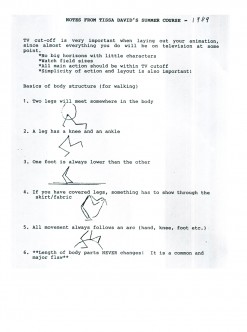 1
1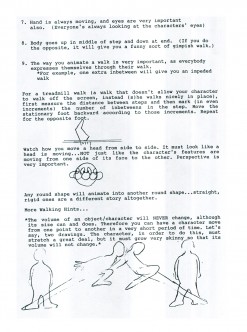 2
2
You can see the earlier parts by going to these links:
_______________part 1, part 2, part 3. part 4, and part 5, and finally, part 6.
Animation &Articles on Animation &Books &Tissa David 18 Oct 2012 05:44 am
Tissa’s Class – part 4
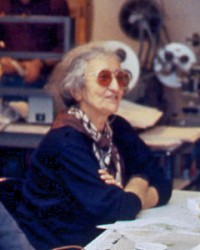 - Tissa David taught a class in animation for free, open to anyone who wanted to attend. This was sponsored by R.O. Blechman out of his studio, The Ink Tank, from 1991 through 1993.. It was held after hours, so that those who worked in the business could attend.
- Tissa David taught a class in animation for free, open to anyone who wanted to attend. This was sponsored by R.O. Blechman out of his studio, The Ink Tank, from 1991 through 1993.. It was held after hours, so that those who worked in the business could attend.
One of Tissa’s students, the talented animator, Eugene Salandra, kept exceptional notes of the classes. With his permission, I’ve been posting those notes here. Some of those notes seem a bit dated these days. They were done for 2D animation that was shot under a camera. Consequently, many of the layout lessons which appear in the beginning of today’s post might seem irrelevant to computer drawn and scanned artwork. In fact, they are completely relevant, and learning the information will help you understand the proper use of the “camera” even if the camera is a computer.
You can see the earlier parts by going to these links:
_____________part 1 _______ part 2 _______ part 3
And, here’s part 4:
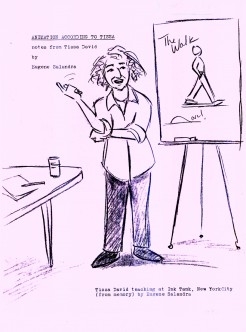 1
1 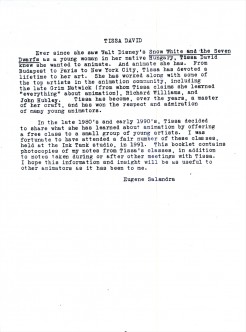 2
2I repeat these first two pages.
(Click any image to enlarge.)
_______
Still more to come, next Thursday.
_______
Articles on Animation &Books &Comic Art &Disney 15 Oct 2012 06:35 am
Hank Ketcham @ Disney – 1
- Bill Peckmann told me about Hank Ketcham’s autobiography, The Merchant of Dennis the Menace: The Autobiography of Hank Ketcham. I wasn’t aware of it. I learned that there was a chapter on his work at the Disney studio, and Bill said he’d scan it for me. So, I was pleased and excited and knew it’d be a great piece to post here. And it is.
So this is the first part of the book’s chapter, well worth the read. If you’re interested in the book, it’s still available on Amazon.
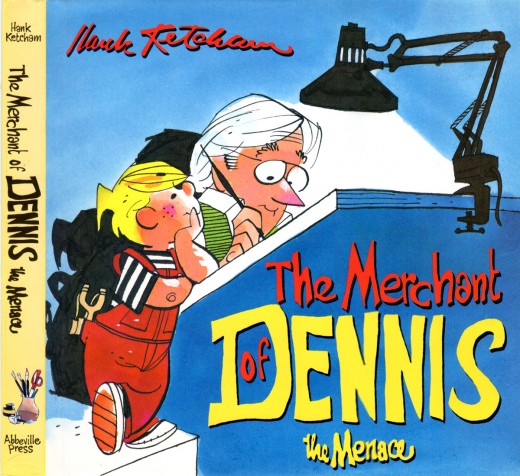
The book’s cover
The second half of this chapter will come on Friday.
Animation &Articles on Animation &Luzzati & Gianini &repeated posts 02 Oct 2012 04:59 am
Luzzati & Gianini
- I spent some time rereading some material about Emanuele Luzzati and Giulio Gianini. I went back into my archives and found a lot of frame grabs and a bit of info about them at the time of their individual deaths. Ive put three of those posts together and am posting that today as sort of a retrospective piece.
Luzzati
Jan. 26th, 2007
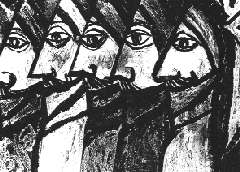 Emanuele Luzzati has died. He was the brilliant Italian designer, who worked with Giulio Gianini in creating some wonderful animated cut-out films.
Emanuele Luzzati has died. He was the brilliant Italian designer, who worked with Giulio Gianini in creating some wonderful animated cut-out films.
Their films adapted operatic overtures in reworking the operas themselves. The two were nominated for the Oscar for “The Thieving Magpie,” done in 1965 an interpretation of Rossini’s opera and again in 1973 for “Pulcinella.”
Luzzati died Jan. 26th, 2007 on the way home from work. He collapsed just outside his home. He hadn’t been ill prior to this. He spoke on the phone with Giulio Gianini, who has been very ill for some time, that very morning.
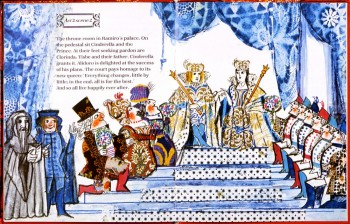 Luzzati designed sets and costumes for stage productions and operas, including the 1963 production he designed for Mozart’s “The Magic Flute.” Fifteen years later he turned the opera into an animated feature that remains one of his most famous works.
Luzzati designed sets and costumes for stage productions and operas, including the 1963 production he designed for Mozart’s “The Magic Flute.” Fifteen years later he turned the opera into an animated feature that remains one of his most famous works.
He’s illustrated and written quite a few books. See this list on Amazon.
(Above: an image from his children’s book, Cinderella.)
The only Obituary I’ve seen for him was this one for the AP. It does give rather complete details of his life and work. AP Obituary.
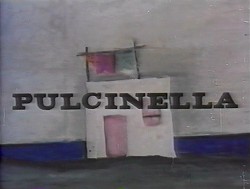 – I received a call from The Guardian in London. The newspaper was doing an obituary for Emanele Luzzati, and they couldn’t find any illustrations to color their report. They’d found some on my blog and wanted to know if they could use them.
– I received a call from The Guardian in London. The newspaper was doing an obituary for Emanele Luzzati, and they couldn’t find any illustrations to color their report. They’d found some on my blog and wanted to know if they could use them.
(Go here to see all Luzzati/Gianini posts.)
Of course, I directed them to Luzzati‘s distributor who could give the clearances they needed.
But I found it all depressing.
This was one of the world’s greatest designers of Operas and Animation. His brilliant animated version of The Magic Flute is a feature that should be in theaters now. Unfortunately, it never made it to theaters (at least, not in the US), and his designs for the opera are equally as stunning.
Years of amazing art he’s produced, and there’s so little – even on-line – that could be readily found for his obituary. I find it confusing. This was the original reason I had for putting so much attention on his work, and the call from the paper pushes me back to do another post. Unfortunately, all I have are frame grabs.
Here is Pulcinella. It is a short that was nominated for the Oscar in 1973. Another cut-out animated film, Frank Film by Frank and Caroline Mouris won the award. The Legend of John Henry by Sam Weiss, produced by Nick Busustow was also nominated.
Like other Luzzati/Gianini films, the score is taken from an opera overture, Rossini’s The Turk in Italy.
The animated film is an abbreviated, caricatured version of the opera. 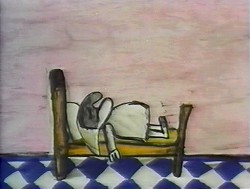
Pulcinella (Punch, as in Punch & Judy) is the principal character who dreams himself into a wild nightmare of a dream that leads us through an abstract world. It’s nice to see how the animators/designers play off the puppet character as well as the opera.
I’m just going to post the images without detailing the story. I like it better that way.
There are some 90 images, so it takes some attention to graphics.
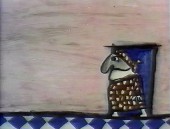
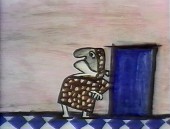
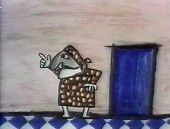
(Click any image on the page to enlarge.)
Gianini
May 18th, 2009
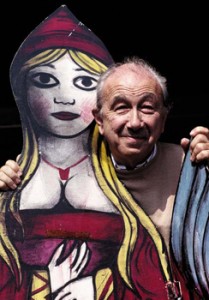 – I’ve been something of a fan of the films of Luzzati and Gianini. I’d met Emanuelle Luzzati at a function thrown at the Italian Embassy in New York, years ago. I bought a book by him, and the artist drew a beautiful pen and ink drawing in the frontispiece of the book.
– I’ve been something of a fan of the films of Luzzati and Gianini. I’d met Emanuelle Luzzati at a function thrown at the Italian Embassy in New York, years ago. I bought a book by him, and the artist drew a beautiful pen and ink drawing in the frontispiece of the book.
In 1988, I met Giulio Gianini in Italy during a stay of a couple of pleasant days with an assistant of his at the festival in Treviso, Italy.
Mr. Gianini died this past Saturday, and I wanted to offer a bit of a memorial. Emanuelle Luzzati died January, 2007 and to memorialize that I posted some illustrations and information about the duo with a lot of frame grabs from a number of the Luzzati/Gianini films. It took a few posts, and I left off without wanting to overplay all of the art at my availability.
Luzzati & friend
The Thieving Magpie was the first of their films to receive an Oscar nomination, and it was the first of the frame-grab posts I showcased. I’d like to post it again in honor of Mr. Gianini. He was sick for several years and in particularly bad condition. His death wasn’t a surprise, but it is still an enormous loss.
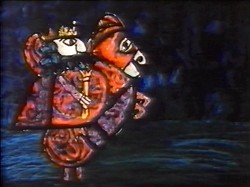 1
1 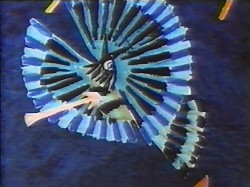 2
2(Click any image to enlarge.)
La Gazza Ladra (The Thieving Magpie) is a Rossini opera about a young maidservant who, accused of stealing a silver spoon, is sentenced to death for her crime.
At the eleventh hour, the real culprit is found to be a magpie.
A cartoon, if ever there was one. With great music!
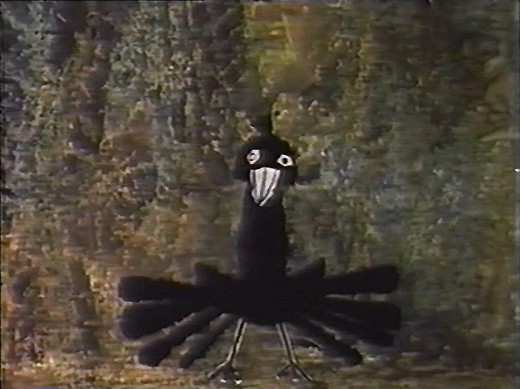
The film tells a tale wherein a king and his hunters, on a bird hunt, are beaten
by a magpie who steals their gems and ultimately destroys their village.
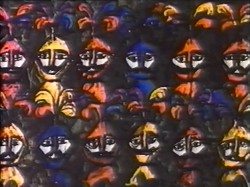 4
4 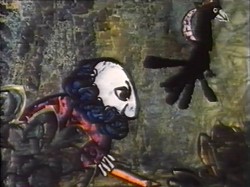 5
5
Luzzati who spent many years designing operas and ballets,
brought his knowledge to animation as the pair adapted several operas often utilizing the overtures of the operas they were adapting.
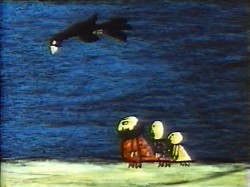 6
6 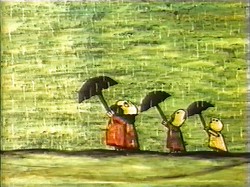 7 The film was nominated in 1964 along with
7 The film was nominated in 1964 along with
Clay, and the Origin of the Species by Eliot Noyes
and the winner, Chuck Jones’ Dot and the Line.
The Sound of Music won the Best Picture Oscar, that year.
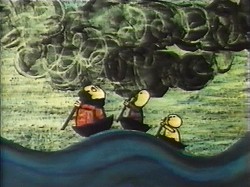 8
8 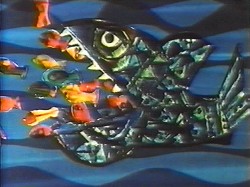 9 The use of cut-out animation wasn’t mainstream at the time.
9 The use of cut-out animation wasn’t mainstream at the time.
This is years before Terry Gilliam made it somewhat fashionable. All of the
Luzzati-Gianini films were totally inventive and creative within the form they established.
Gianini’s animation was as dreamlike as Luzzati’s exciting designs. The films
look to be designed somewhere between Chagall, Kirchner and
stained-glass windows; the sensibilities are all Luzzati and Gianini.
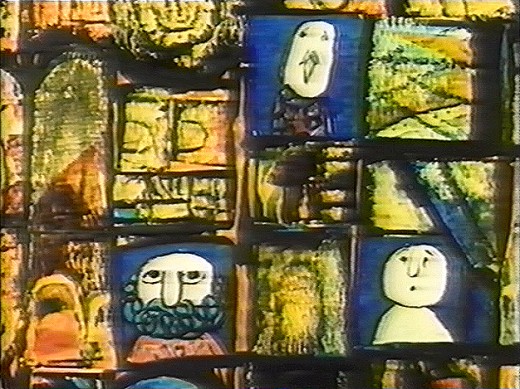 Today we have Flash animation which does just about the same thing as cut-out animation, but the form used today is flat and vulgar and cartoony. It might be useful for practitioners of Flash to take a good look at what these two brilliant designer/animators did with a similar form under more complex and arduous methods. Ulltimately, it’s all related.
Today we have Flash animation which does just about the same thing as cut-out animation, but the form used today is flat and vulgar and cartoony. It might be useful for practitioners of Flash to take a good look at what these two brilliant designer/animators did with a similar form under more complex and arduous methods. Ulltimately, it’s all related.
You can get a bit more information about Gianini and Luzzati from the website of the Luzzati Museum in Genova.
Articles on Animation &Richard Williams &Tissa David 01 Oct 2012 06:37 am
Raggedy Ann and Andy
- On Tuesday, October 23rd a memorial service for Tissa David will be held at the Lighthouse Academy Theater at 111 East 59th Street. It will begin punctually at 7pm. Seats will be available on a first-come first-served basis. To continue celebration of Tissa’s work, here’s an article that appeared in Cartoonist Profiles Magazine, No.33, March 1977. No writer’s name is credited.
We thank Mike Hutner. of Twentieth Century-Fox, for the production notes about this new full-length animated film, RAGGEDY ANN & ANDY, which is having its world-premiere in New York on March 20th.
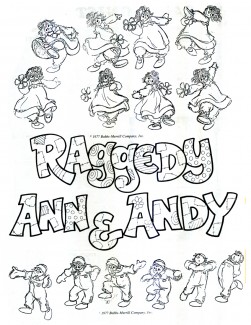 Raggedy Ann is a caricature of a rag doll, with stringy red hair, button eyes and a painted triangular nose.
Raggedy Ann is a caricature of a rag doll, with stringy red hair, button eyes and a painted triangular nose.
Harold Geneen is the Chairman of the Board of the ITT Corporation, an industrial empire which includes hotel chains, construction companies, the Bobbs-Mcrrill book publishing house and a car rental lirm which tries harder.
It was hardly destined that they would be linked in one of the year’s most ambitious entertainment ventures. But the proof is on 35mm Panavision film, in the form of “Raggedy Ann and Andy,” the feature-length animated musical from 20th Century Fox.
The genesis of the full-length am mated musical—one of the few such projects attempted during the past few decades without the Disney insignia—is a story which has its own touches of fantasy. In addition to ITT’s Board Chairman, the principals include:
• A team of Broadway theatre-owners and producers, who never before made a movie, lei alone an animated feature.
• An Emmy-winning composer, one of whose songs was a hit for both “Kermit the Frog” and Frank Sinatra.
• An Academy Award winning director who thought he was out of the picture until he look part in an all-night jam session at his Soho studio.
• Several legendary cartoonists, including the originator of “Betty Boop” and the man who gave Disney—and the rest of America—the beloved “Goofy.”
How they came to join forces really begins in Silvermine, Conn, in the early 1900′s. when newspaper cartoonist John Gruelle took a few minutes away from his drawing board to help his daughter fix a discarded rag doll. The toy was named “Raggedy Ann” by combining characters from two poems by James Whitcomb Riley — The Rag Man and Orphan Annie.
When Marcella Gruelle became desperately ill, her father sat by her bedside, making up stories about the doll’s adventures after everyone in the house was asleep. Marcella died on March 21st, 1916. after which her father determined to share with the world the stories he had not had time to tell her.
By the early 1970′s. Raggedy Ann was part of American folklore, a character whose exploits had sold some 80 million books and hundreds of millions of toys and games. That was when Lester Osterman. a former stockbroker who brought Sammy Davis Jr. to Broadway in “Mr. Wonderful.” and Richard Horner an ex-actor who had appeared in the Oberammergau “Passion Play” became involved. The producers of such Broadway successes as “Butley” and “Hadrian the Seventh,” they had just completed a live-action television special for the Hallmark Hall of Fame, based on the children’s classic. “The Littlest Angel.” Now they were searching for a similar property . . . for the same showcase.
A casual lunch with a merchandiser of children’s toys proved crucial. “Would you believe that after all these years. ‘Raggedy Ann’ is -.till one of the biggest sellers?” inquired the friend rhetorically. Within a few days. Osterman and Horner were on the doorstep of the Bobbs-Merrill Company, which publishes the “Raggedy Ann” stories, requesting development rights to the character.
An equally informal meeting with Joe Raposo. Emmy-winning composer-conductor of “Sesame Street,” brought music to the project. Horner and Osterman found themselves seated with Raposo at a Friars’ Roast for Johnny Carson. Somewhere between the broiled chicken and dessert, Raposo agreed lo score the “Raggedy Ann” tales.
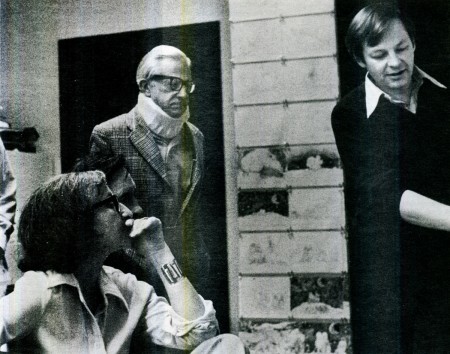
Animators Tissa David and Art Babbitt with director Dick Williams.
Next to join the troupe were writers Max Wilk and Pat Thackeray. True to Gruelle’s imagination, they created a fantasy world in which toys spring joyously to life. When Raggedy Ann discovers that the pixieish French doll, Babette, has been kidnapped by a pirate known as Captain Contagious, they set out to free her. That takes them into the “deep dark woods”, inhabited by such personalities as the “Looney King,” “the camel with the wrinkled knees” (one of Gruelle’s personal favorites) and the “Greedy,” a kind of confectionery version of the La Brea Tarpits. “We thought we were writing a live television special,” recalls Ms. Thackeray. “So much so that we began casting Raggedy Ann in our minds, alternating between personalities like Liza Minnelli and Goldie Hawn.”
But Raposo was having second thoughts. “It won’t work,” he finally admiitted. “Put a red fright wig and a painted mouth on an actress— any actress—and do you know what you’ll have? A circus clown.”
The obvious alternative was a full-length animated musical cartoon. Which is like saying the obvious alternative to your reliable family car is to go out and buy a Rolls Royce. There is a reason, as director Richard Williams would later point out, why animated features are almost exclusively the province of the Disney organization. “And even Disney turns out several live comedies and nature films for every animated movie.” Williams notes.
To create 90 minutes or more of full animation (as opposed to the jittery short-cuts of television cartooning) requires more than one million preliminary and final drawings. From inception to “answer print” lakes three years or more. “And the cost,” adds Williams, “is tremendous.”
“Since the Hallmark people had discussed a live musical, they were perfectly justified in walking away from a more costly animated feature,” says Horner. The producers now had a cartoon without a cartoonist, a television special without a sponsor, and a project without investors. But it was no time to think small. Why settle for a television special? Why not make “Raggedy Ann and Andy” as a movie?
It was back to Bobbs-Merrill with the suggestion that Osierman-Horner and the publishing house become partners in the proposed film. That, the publishing executives said, was up to their parent company, ITT. A meeting was arranged with Board Chairman Geneen. which developed into a corporate backers audition.
Pat Thackeray later described the “incredible afternoon” to author and critic John Canemaker, whose book, “The Animated ‘Raggedy Ann and Andy’-The Story Behind Ihe Movie,” will be published at the same time as the 20th Century Fox release.
“Geneen came into the room, asking questions, his mind like a laser,” she said. “He remembered a stage version of ‘Raggedy Ann’ he’d enjoyed as a youngster, in the I920′s. We made our presentation. Then, as we were going down in the elevator, a guard told me, ‘I don’t know who you are but you’ve got it made.’
“I asked why.
“The guard said, ‘Because the old man stuck his head out of the door and asked what I thought of the music coming from his office. I said it sounded pretty good to me. That wasn’t just good, Harry,’ he said, ‘that was terrific.’”
With financial backing assured, the next problem was simple. Who would draw the million-plus pictures which would make up the finished movie? And who would piece them all together with wit and style?
Firsl choice was Richard Williams, the Canadian-born, London based head of his own animation studio who had won an Academy Award for “A Christmas Carol” and a host of admirers for the “Return of the Pink Panther.” Despite a commitment to his own project, “The Thief and the Cobbler” Williams listened to Raposo’s score, and said yes.
“But my business manager said ‘no,’” Williams recalled. “Or to put it more accurately. he priced my services so high, there was no way the picture could have come in on budget.” What happened to the business manager? “He’s not with me anymore,” Williams replied with British sang-froid.
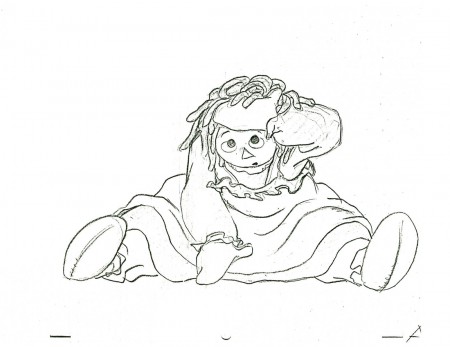
Tissa David’s rag doll
Osterman and Horner began negotiations with a New York cartoon “factory” which specialized in limited animation for television. Within a short period (according to Canemaker), the newcomers had virtually thrown away the Wilk-Thackeray script, replacing Gruelle’s characters with a “Love Fairy” and a “Cookie Giant.” Outraged. Raposo walked out of a story conference (“before 1 threw up from all that treacle,” he recalls) and caught a plane to London to make a last-ditch attempt at hiring Williams.
Discovering a shared taste in jazz, the two men opened a bottle of Scotch and during an impromptu jam session, past misunderstandings vanished in a vapor of 12-year-old malt and good will. The animated movie finally had an animator.
It was Williams who formulated the approach to the picture. “Disney’s contribution to animation is colossal,” he said. “The technique of bringing a cartoon character to life would slill be in the dark ages without Disnev. But to copy the ‘look’ of his films would have been disastrous.
“Instead, 1 said, ‘let’s be as rich and lush as Disney in a totally different style … in the style of Johnny Gruelle.’”
A remarkable team of animators was assembled in New York and Hollywood lo carry out that mission. Included were several men and women who can legitimately be termed ‘living legends’ in the field of motion picture cartooning.
There was Grim Natwick, a spry octogenarian, who had designed the first of the “Betty Boop” pictures for producer Max Fleischer in the thirties and animated the majority of Snow White’s scenes for Disney. Another Disney veteran was Art Babbitt, the co-creator of “Goofy” and the dancing mushrooms in “Fantasia,” whose verbal donnybrooks with Disney during the I940′s had been peppery Hollywood gossip.
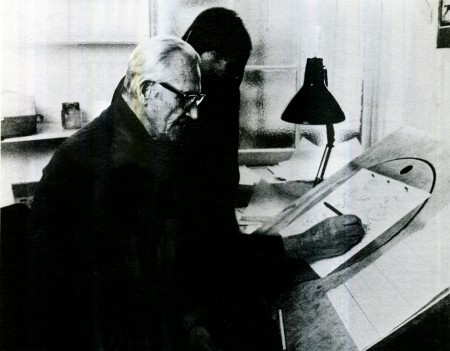
85 year old animator Grim Natwick
with young animator Crystal Russell
To draw the “Greedy,” a ‘monster’ made of whipped cream, cherry banana taffy, chocolate fudge and other sugary delights. Emory Hawkins—a veteran of Disney as well as the MOM and Warner Brothers cartoon studios -was summoned from his New Mexico ranch. “Raggedy Ann” herself was drawn by Tissa David, a Transylvanian-born artist who had worked with Natwick at UPA Productions during the heyday of “Mr. Magoo” and “Gerald McBoing Boing.”
From Canada came Gerald Potterton, head of his own animation studio. whose credits include the Peabody Award winning “Pinter People” and key sequences in the Beatles’ “Yellow Submarine.” The design of the vital storyboards and layouts which gave the picture its graphics stamp was up to Cornelius “Corny” Cole, both an animator and a renowned painter.
The musical routines for the “Twin Penny Dolls,” whose movements are perfectly synchronized with each other, were drawn by Gerry Chiniquy. who looks like Gene Kelly and specializes in “dance animation.” During a ten year period at the Warner Brothers Studios, whenever Bugs Bunny or Daffy Duck were called on to trip the light fantastic, Chiniquy got the nod.
Soon, the sketches began mounting—at the unit’s bustling New York headquarters (which are wag dubbed “Raggedy Ann East”), a California studio and director Williams’ home base in London. Williams’ job was clearly defined.
“I was in charge of catching airplanes,” he laughed. Spending ten days to two weeks in each city, Williams would check the work of dozens of illustrators, pencil in his own suggestions, hold story conferences, review preliminary sound-track recordings, analyze the “Leica Reel” (a rough compilation of the motion picture in progress, pieced together as new drawings and backgrounds were added “like a jigsaw puzzle”), then rush to the airport.
“I became one of the world’s great authorities on jet lag,” he added.
Choosing the voices of Captain Contagious, Suzy Pincushion, the zany “Gazooks” and other denizens of Raggedy Ann’s fantasy world became a crucial problem. Tradition says the voices for a feature-length cartoon should be box-office names whose unseen presence will enhance the picture’s publicity and promotion. Raposo and Williams chose to defy tradition, backed by co-producer Horner. “We were treating the picture as a big, lavish Broadway musical—in the form of an animated cartoon—so we looked to Broadwav for vocally gifted actors,” said Raposo. Casting sessions were held in a New York studio, where hundreds of performers went through their paces.
“I knew the long hours were getting to me when 1 walked through the hall, outside the studio, and saw a man reading our script, who really looked like a camel,” said Williams. Ironically, the actor was dour-faced Fred Stuthman, who eventually did provide the voice for the “Camel With the Wrinkled Knees.”
Another actor’s reaction set the whimsical tone of the casting sessions.
“You want me to play what?” said Joe Silver, veteran of such movies as “The Apprenticeship of Duddy Kravitz”, in utter disbelief.
“An enormous pit of taffy, filled with gum-drops and maraschino cherries and covered with chocolate sauce,” answered casting director Howard Feuer.
“Is this a gag?” asked Silver. He was quickly persuaded it was not and even more quicklv rose to the chocolate covered challenge.
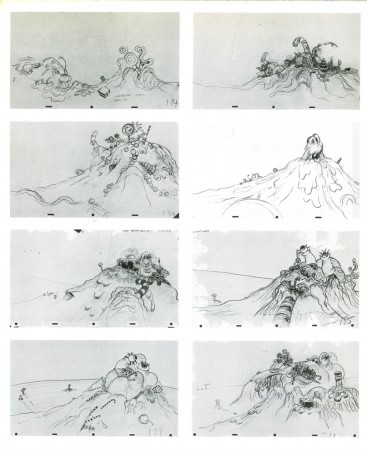
Emory Hawkins Taffy Pit
Virtually all of the “Raggedy Ann and Andy” voices are better known to their peers than to the general public. Included are Didi Conn of the television series, “The Practice.” whose voice has been likened to that of a “sexy frog” as Raggedy Ann: Mark Baker, co-star of Leonard Bernstein’s “Candide” as Andy: Allan Sues from “Laugh-In.” Arnold Stang, Mason Adams and George S. Irving. The “sockworm” is vocally portrayed by a man with more impressive credentials in another phase of show business—Sheldon Harnick, lyricist of “Fiddler on the Roof.”
Only one performer is seen on film, during an introductory sequence about Marcella Gruelle. Casting the role, director Williams, recalls, was a thorny problem. “I needed a little girl on whom 1 could impose a 12 hour work day, to stay within schedule.” Rather than face some other lot’s outraged parents, he elected his own six-year-old daughter, Claire. “My presence made it a kind of game for her.” he adds.
Meanwhile, the pressure at Raggedy Ann East. Raggedy Ann West and the London base was mounting. Williams and his associates had promised a finished movie to Bobbs-Merrill in time for the film to be launched nationally by Easter, 1977. The million-plus drawings had been completed, and now the inkers, opaquers, “in betweeners,” and other technical craftsmen, vital to an animated movie, were working double and triple shifts, to meet the deadline.
The only rule, Williams paradoxically demanded as he fired memos to the tripartite staff (“usually dictated somewhere over Kansas,”) was that there must be no compromise in quality. Typical of the fine detail necessary to achieve “full animation” was an incident which occurred in the office of veteran supervisor Marlene Robinson. An “inbetweener”-responsible for linking the animators’ drawings, frame by frame—was frustrated. Several strands of Raggedy Ann’s hair refused to move in rhythm with the rest of the character.
The next hour was devoted to re-drawing the wisps of hair, over and over, until there was perfect synchronization.
“It seems like such a little thing,” Ms. Robinson said afterward. “But blown up to Panavision size, anything which distracts the eye of the moviegoer—shapes that vary, colors that fade, even a recalcitrant strand of hair, is enough to destroy the ‘illusion.’”
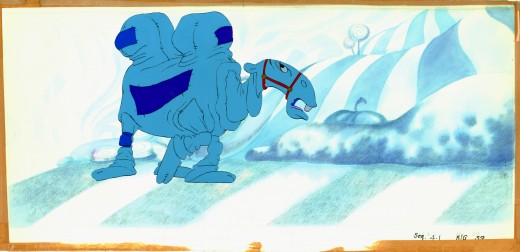
Babbitt’s “Camel with the wrinkled knees”
In another room, Cosmo Pepe, working with complex equipment designed by cameraman Al Rezek, was transferring the drawings onto sheets of transparent celluloid—by shooting 13.000 volts of electricity through them-prior to putting them through a Xerox enlarger. “We developed a special toner, for the enlargements, to Dick Williams’ specifications,” Pepe revealed. “The toning is vitally important: it affects the way the characters stand out on the big screen. The formula for this toner is as closely guarded as a three star chefs award winning recipe.”
By the lime “Raggedy Ann and Andy” was completed, and ready for release by 20lh Century Fox more than five years had passed from the date on which Osterman and Horner first solicited the rights from Bobbs-Merrill. More than two years had been spent in production.
Richard Williams summed up the feelings of everyone involved by quoting Johnny Gruelle. “It does pay to do more work than you are paid for, after all,” Gruelle once told an interviewer. “Someone, somewhere, sometime will see it and appreciate it.”
Articles on Animation &Richard Williams &Tissa David 02 Sep 2012 04:21 am
Labor Day
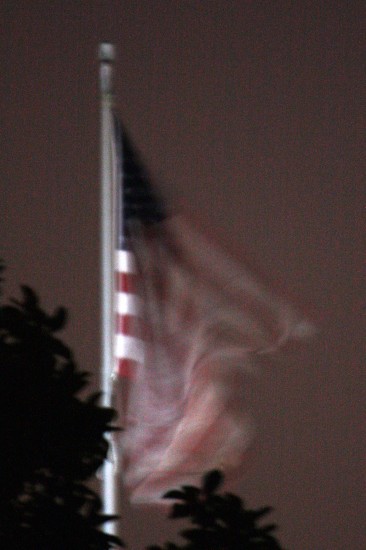
Steve Fisher returns from his Summer with the perfect picture for Labor Day 2012.
Tomorrow is Labor Day. The photo shows a flag which at its base is in focus and grows more and more wildly out of focus as it moves from that base. That’s the American political system at this point in 2012. In the most important speech of his life to-date, Paul Ryan, Vice Presidential candidate, lied openly. When confronted by the obvious lies on CNN, he admitted it, rode right over the lies, defending what he’d said even though there’s no truth there and no reality to it. The man rides on the border of the insane, convinced that he’s right, and having no proof of it, makes it up. Somehow this makes sense to him but not to those of us who prefer honesty. The old media (not the “liberal media”) report their findings to him and he merely mocks them. Their basinc discoveries are irrelevant to him. He wants only to dupe his base and capture other simpe minded folk ot there. We, the bigger audience, can only take it in and vote when it gets to be our turn.
Just the same . . . _______ . . . Happy Labor Day
By the way, Labor Day exists as a celebration of the Labor movement, meaning the U-nions. They are the enemy of the political right, and those on the right should stand by their principles and go to work. Or, at least, shut up while they take the day off from work with salary. There’ll be plenty of time tomorrow for more lies.
Jones Doc to Air
- Tomorrow morning, at 10:15 am, Turner Classic Movies will air the Chuck Jones documentary, Chuck Jones: Memories of a Childhood. Undoubtedly, this is in conjunction with the Jones Centennial Celebration currently in progress. This film was directed by Peggy Stern, the producer who worked with John Canemaker on his Oscar winning film, The Moon and the Sun. Canemaker is a producer on this film.
It’s a 30 min film which will be followed by the Jones short, The Dot and the Line.
Grim Writes About Tissa
Here’s an interview Tissa David did with her mentor, Grim Natwick, for Cartoonist Profiles magazine.
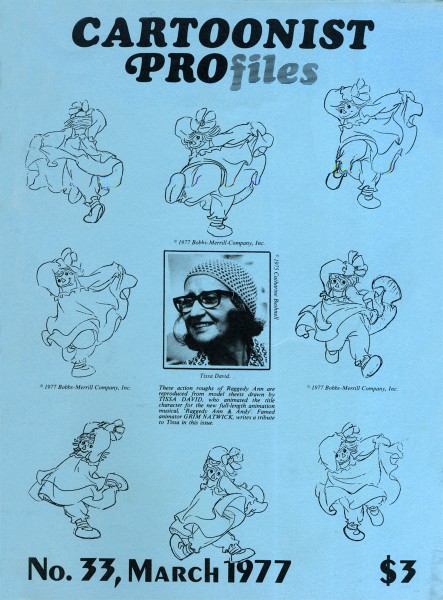
Magazine Cover
